Growing up in Denmark, I never considered my country a tourist destination. But maybe that’s because I grew up in a small town in Jutland, far away from the busy capital of Copenhagen. For those growing up there, their perception of tourism is most likely very different from mine. This was something I realized when I moved to the city to study back in 2016. I was stunned to see the hordes of tourists, all flocking to see the same sights. The magnificent Tivoli Gardens. The colourful houses of Nyhavn. The queen’s palace. The famous freetown of Christiania. And not to mention the (very) Little Mermaid.
I couldn’t help but feel a little proud that all these people from different countries had come to my capital. My little capital. But as I explored my country further in the years to come, I started to get annoyed with all these tourists. Not because I didn’t want them in my country, not at all. But because I realized that Copenhagen is the only place they ever see. With the exception of a few Germans and Scandinavians, I’ve never met a tourist outside of Copenhagen. And when I see people on social media asking for tips on what to see in Denmark, the replies are almost always solely about Copenhagen. Sure, it’s a great city, but Denmark is so much more than its capital.
Denmark is endless rolling hills, forests hugging the coastline, island-dotted seas and historic cobblestone villages with half-timbered cottages. Copenhagen does not represent Denmark very well (does any capital though?), and for this reason, I would love for tourists to travel beyond and actually explore Denmark. Get to know our little country. Fall in love with it like I do over and over again.
So, if you are currently researching what to see on your trip to Denmark, this post is for you. I hope that this list of 20 amazing places throughout the country (from west to east!) will inspire you to venture beyond Copenhagen and broaden your horizons!
1. WW2 remnants in Thy National Park
Let’s start off in the very west of the country where you’ll find Thy National Park. Known for its gorgeous landscapes of sand dunes and vast heathlands, this area is well worth exploring, even if it is very remote.
If you’re a history nerd interested in the Second World War, you now have two reasons to go! Because the national park is full of deserted bunkers, built by the Nazis to deter the Allies from entering the area. Some of the bunkers were later removed or covered up by vegetation or sand, but most of them are still standing today; abandoned, free to be explored and free to be used as a canvas for creative souls.
You’ll find the most impressive collection of bunkers on the beach of Vigsø, but they can be found everywhere throughout the national park so keep your eyes peeled as you roam!
Read more: Thy National Park: Discovering remnants of the Second World War

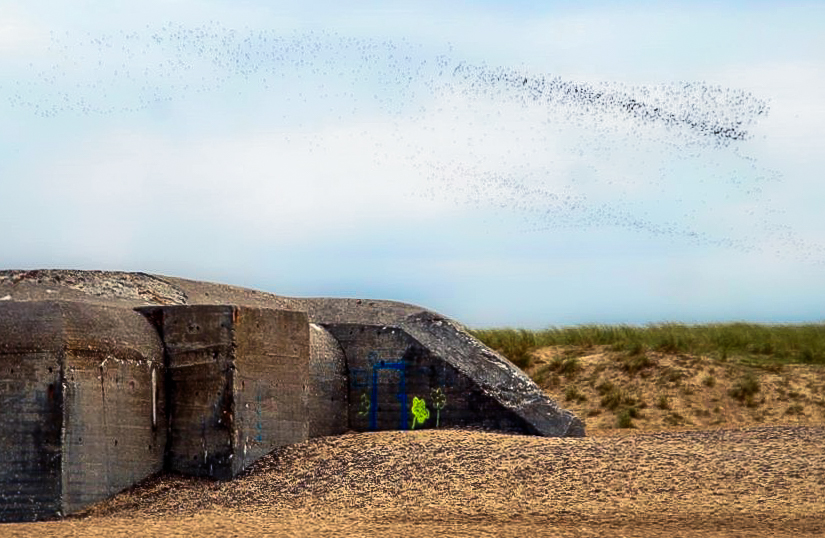
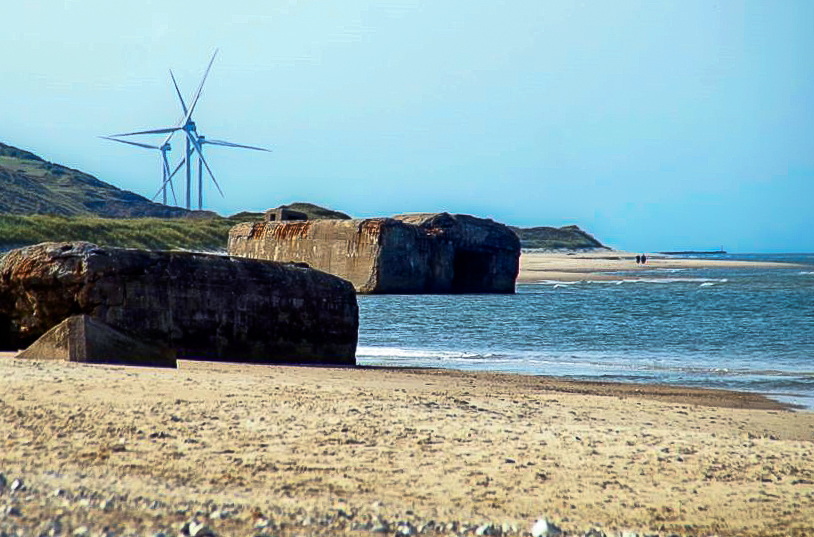

2. The Moravian town of Christiansfeld
Christiansfeld is a town like no other in Denmark. It was founded in 1773 by the Moravian Church, and is a UNESCO World Heritage site due to its incredible preservation of historic buildings related to the church movement.
The Moravian Church is known for its homogeneous and unadorned architecture, which Christiansfeld is one of the best examples of in the world. The town was built in the years 1773-1800, following a strict city plan inspired by earlier Moravian settlements in Germany. It was constructed around a central square with the church and the main administrative buildings, bordered by two parallel streets running east to west. Shops, family homes, a hotel and a school were built along the two parallel streets, all constructed using yellow bricks and red tiles for the roofs. The egalitarian philosophy of the Moravian Church is expressed in the town planning with huge communal houses for the widows and unmarried members of the congregation. The church, called “Salshuset”, is the largest church room in Denmark without load-bearing columns, with capacity for up to 1000 people!
While you’re there, don’t forget to try one of Christiansfeld’s famous honey cakes, baked from a secret recipe dating back to 1783!
Read more: A morning in Christiansfeld, Denmark’s only UNESCO town
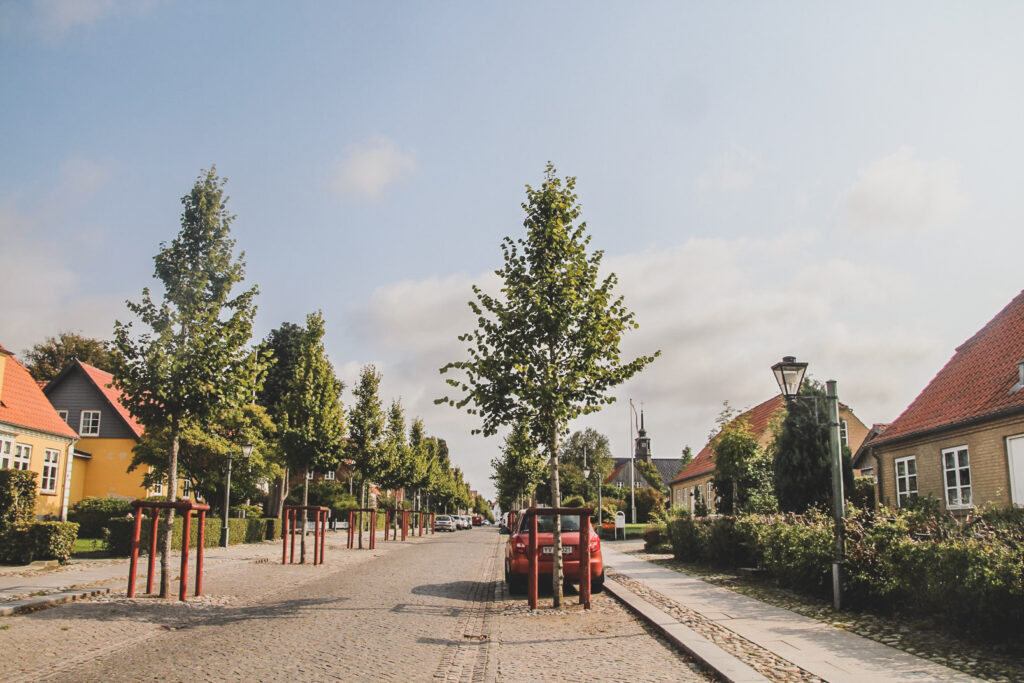
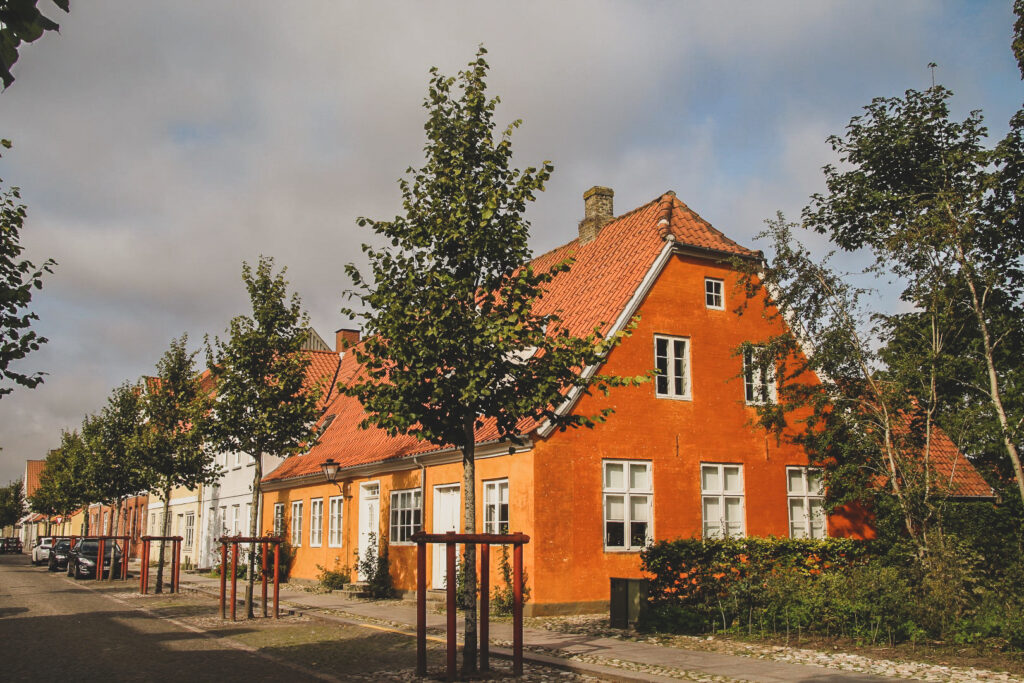
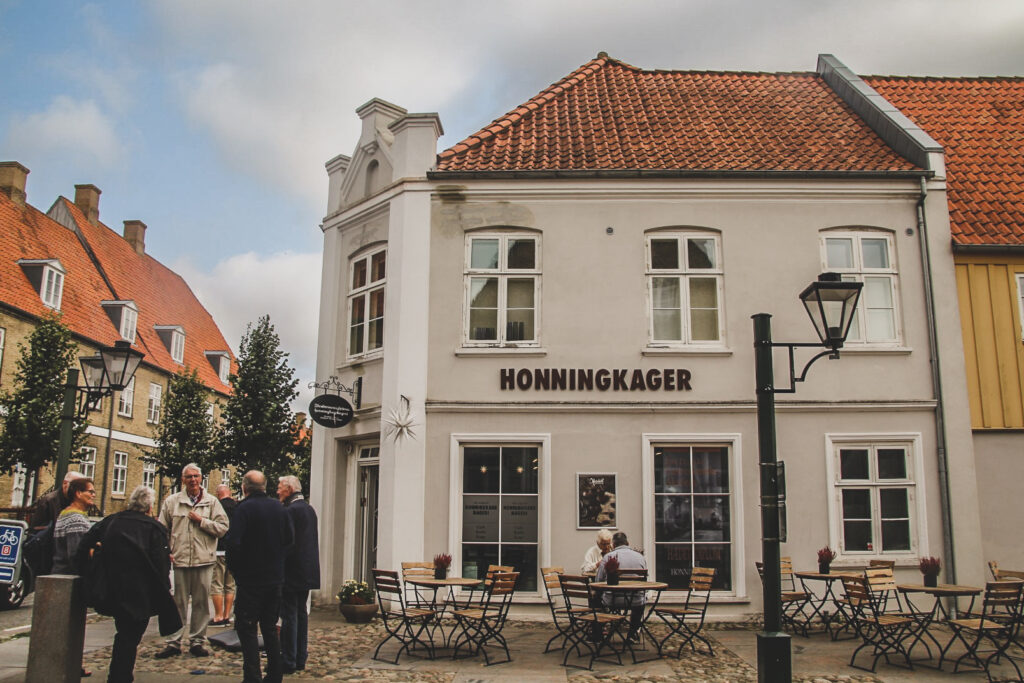
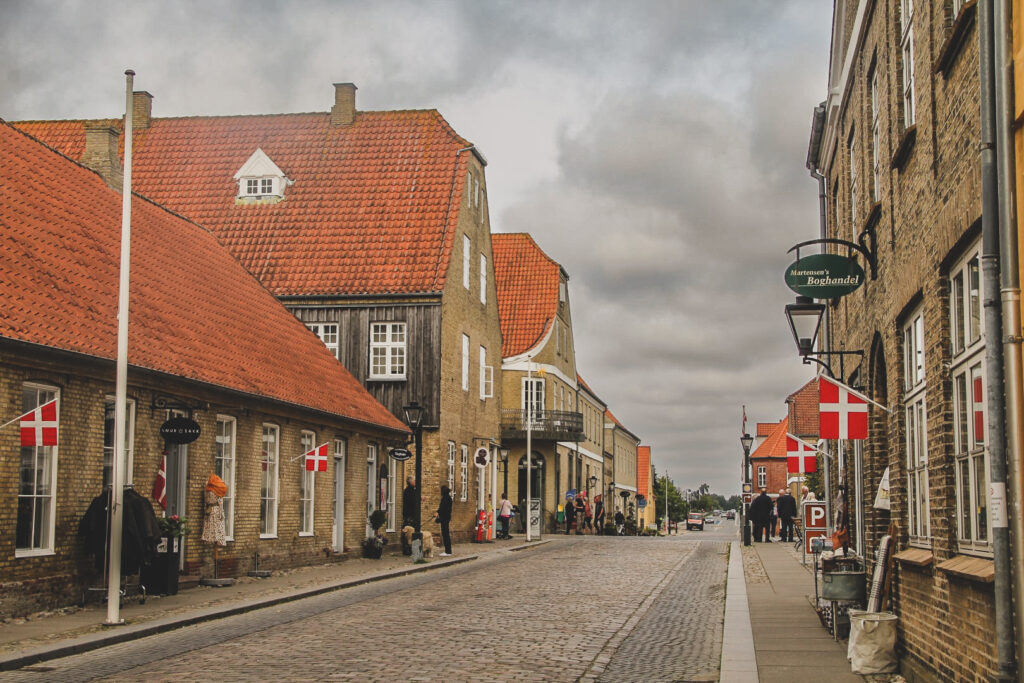
3. Bridgewalking across Lillebælt
Denmark is home to hundreds of bridges, connecting our many islands. But perhaps the most iconic bridge is the Old Little Belt Bridge, which was constructed between 1925 and 1935 to connect Funen with the mainland. The bridge was replaced by the New Little Belt Bridge in 1970, but it continues to be in use by light traffic – and bridgewalkers!
In fact, this is where you’ll find Europe’s only bridge that is accessible to walk on top for the public!
Bridgewalking Lillebælt allows visitors to walk from one end of the bridge to the other, crossing the Little Belt strait with gorgeous views below. I did this trip a few years ago and it was one of the most unique experiences I’ve had in Denmark!
Read more: Bridgewalking over the Little Belt strait in Denmark

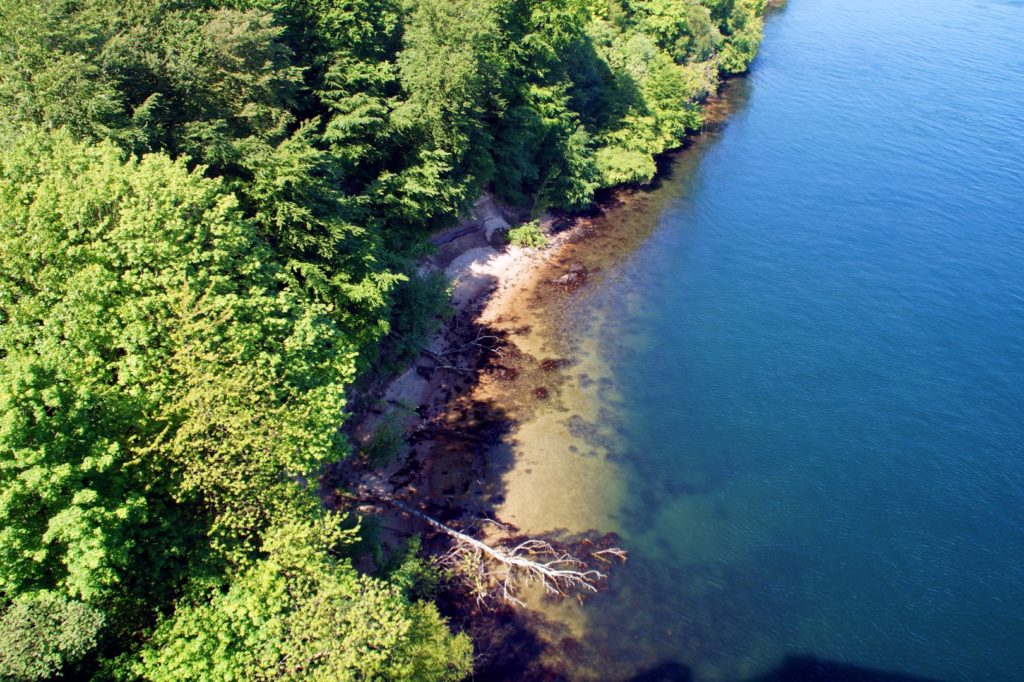
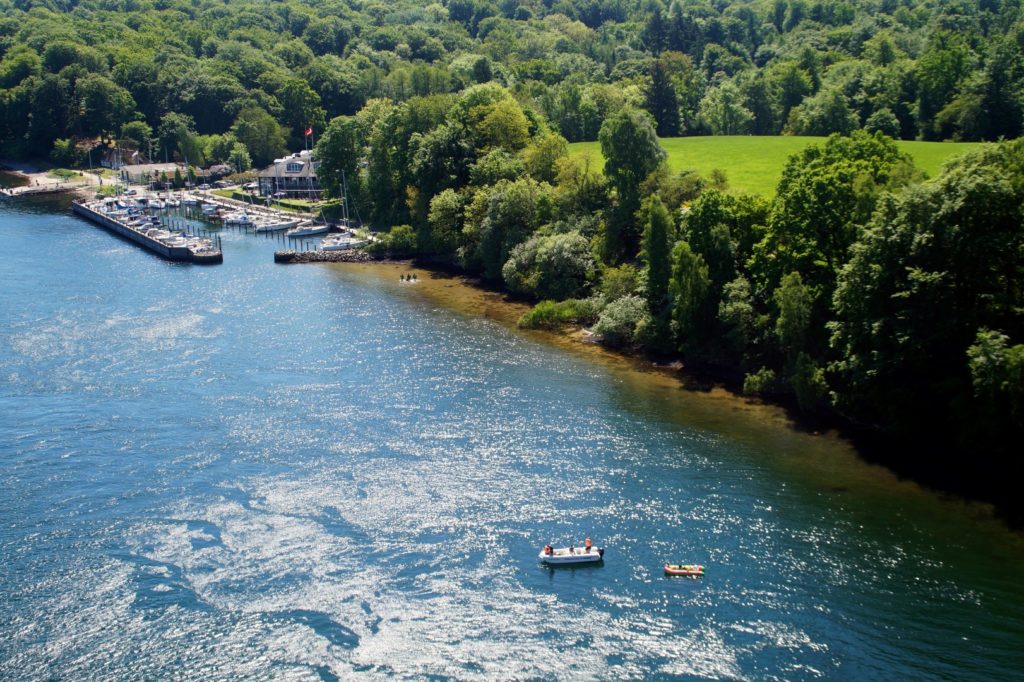

4. The lakes and woodlands of Søhøjlandet
Søhøjlandet (‘the Lake Highland’) is one of the most beautiful places in Denmark. It is the highest lying region in the country and the region with the most lakes. The landscape is characterized by extensive woodlands, heathlands, rolling hills and lakes that are linked by Gudenåen, Denmark’s longest river.
There is plenty to explore in Søhøjlandet, also beyond the famous Himmelbjerget (‘the Sky Mountain’). There are hiking trails in all directions and plenty of unnamed and named hilltops to hike up for magnificent views. You could also spend your time there going on boat trips, kayaking or canoeing! Søhøjlandet has something to offer for all outdoor enthusiasts!
Read more: Exploring Søhøjlandet: A hiking trip to Ry and Vrads
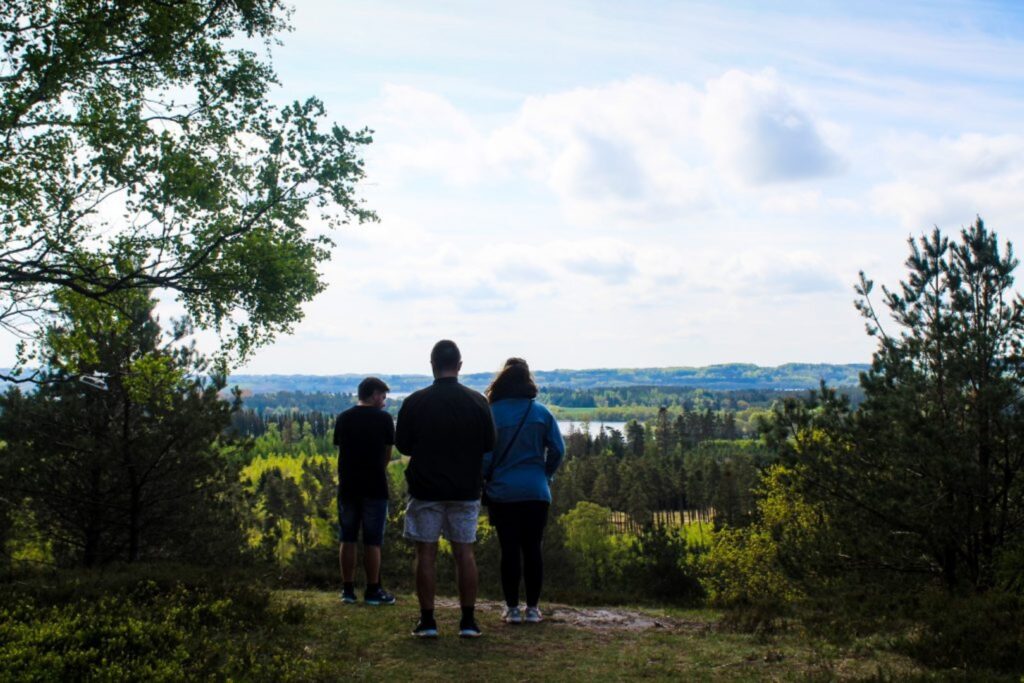
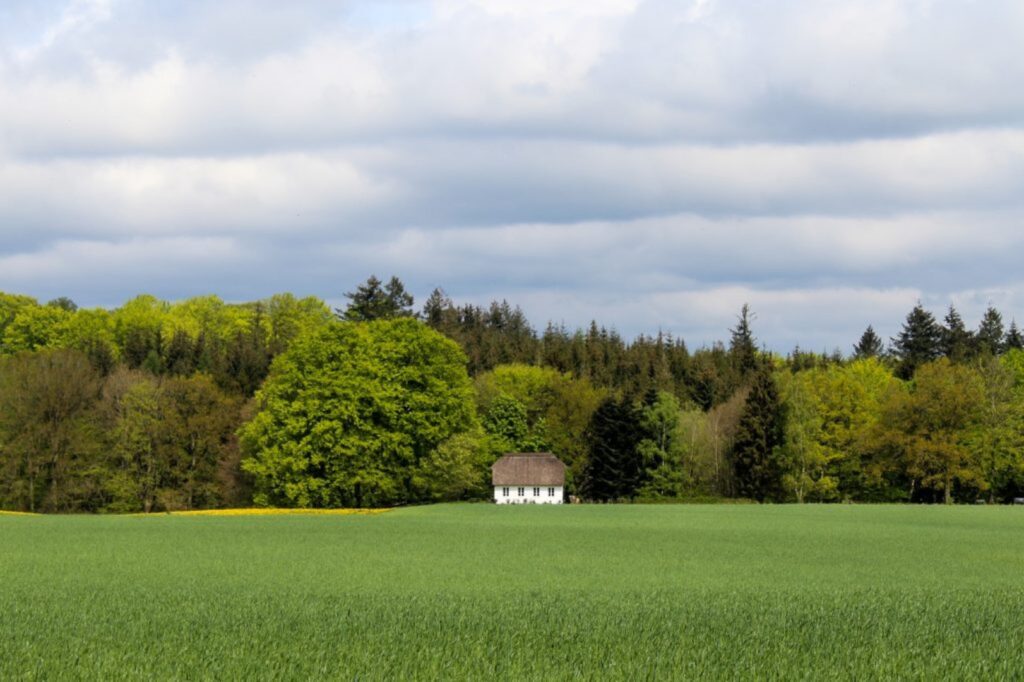
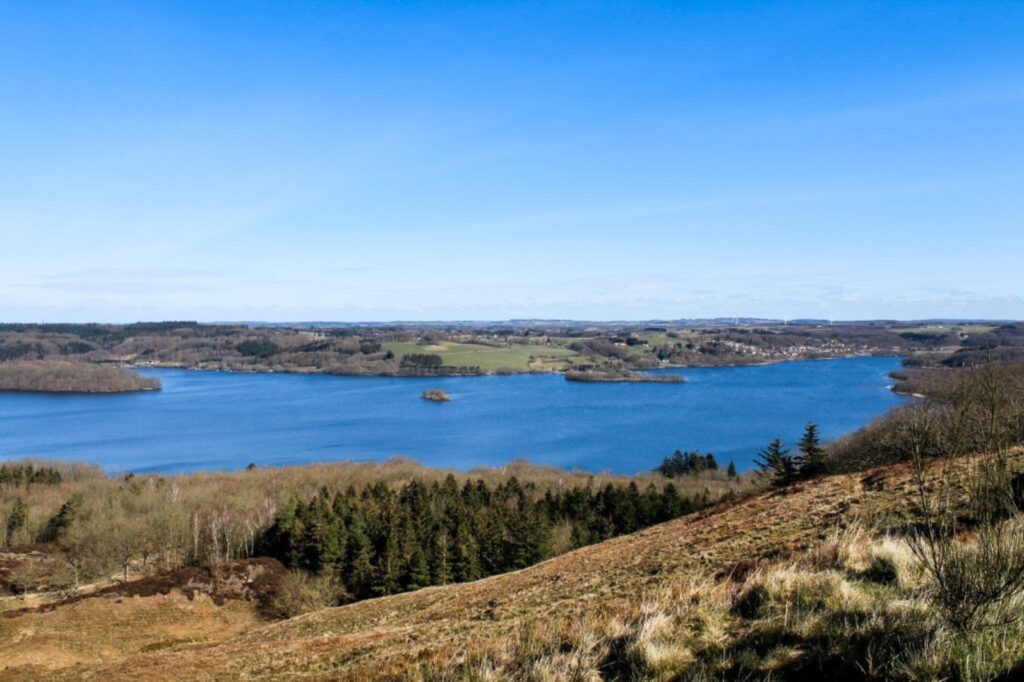
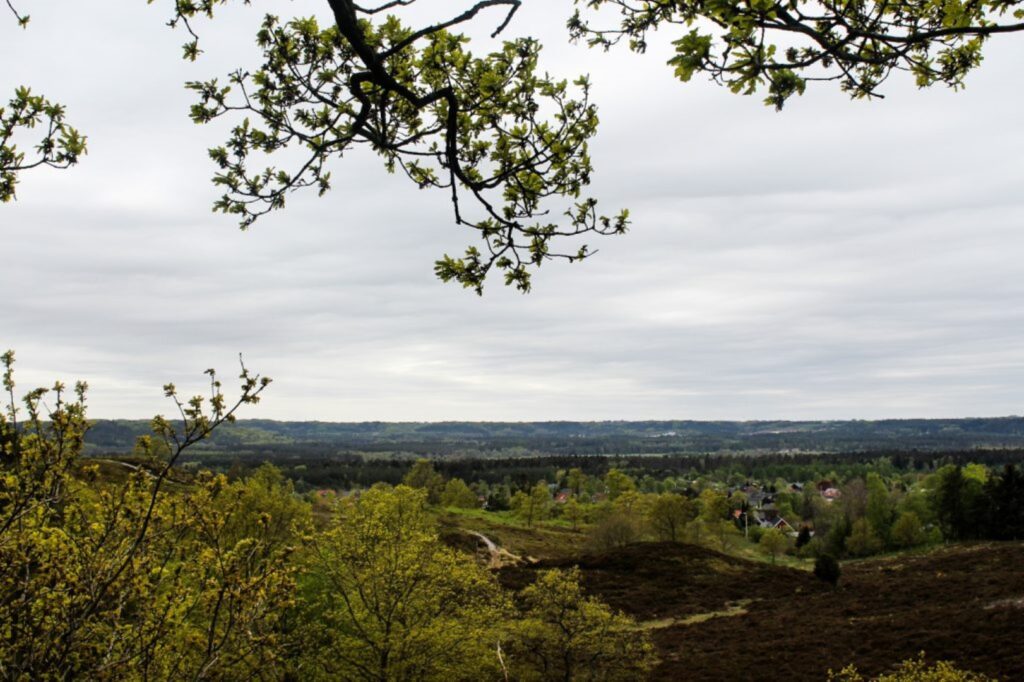
5. The rolling hills of Sondrup Bakker
A smaller “version” of Søhøjlandet is Sondrup Bakker, which is my favourite place close to home. I came here often as a child and I still do as an adult. The area is characterized by rural farms amidst vast woodlands and rolling hills, which only us locals seem to have discovered. This is something I’ll never understand because to me, Sondrup is Denmark at its finest.
So do yourself a favour and explore this gorgeous region. Hike or bike the many forest trails and don’t forget to make your way up to some of the many viewpoints in the area. The views from Udsigtshøjene near Trustrup are particularly beautiful!
Read more: Discovering Horsens Fjord: A three-day cycling journey in East Jutland & An abandoned world: The architectural masterpiece of Sondrup Bakker, Denmark
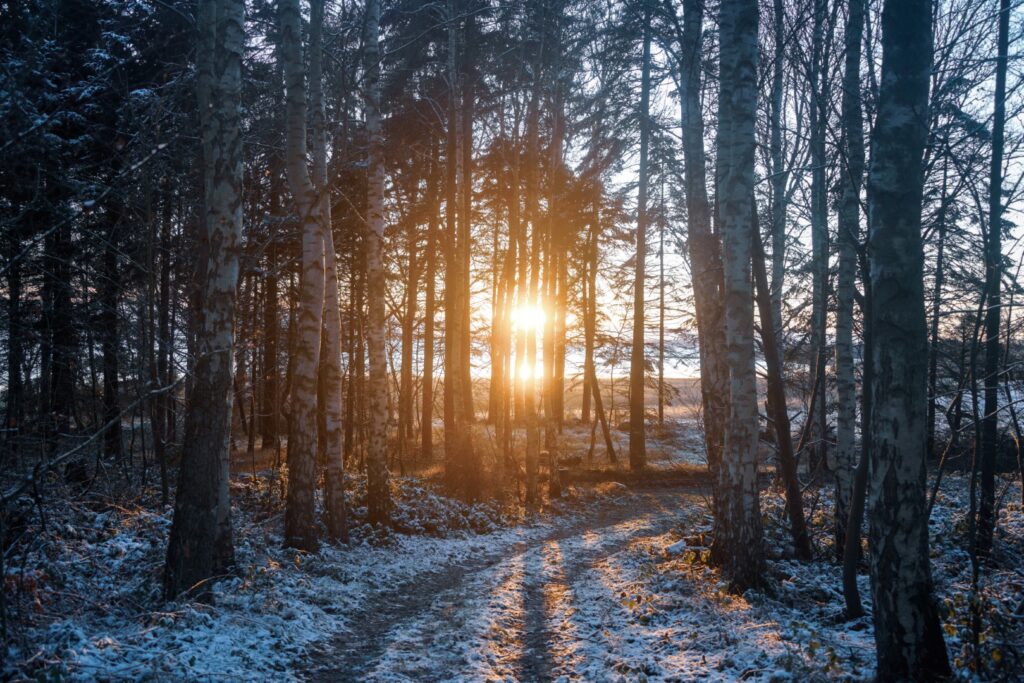
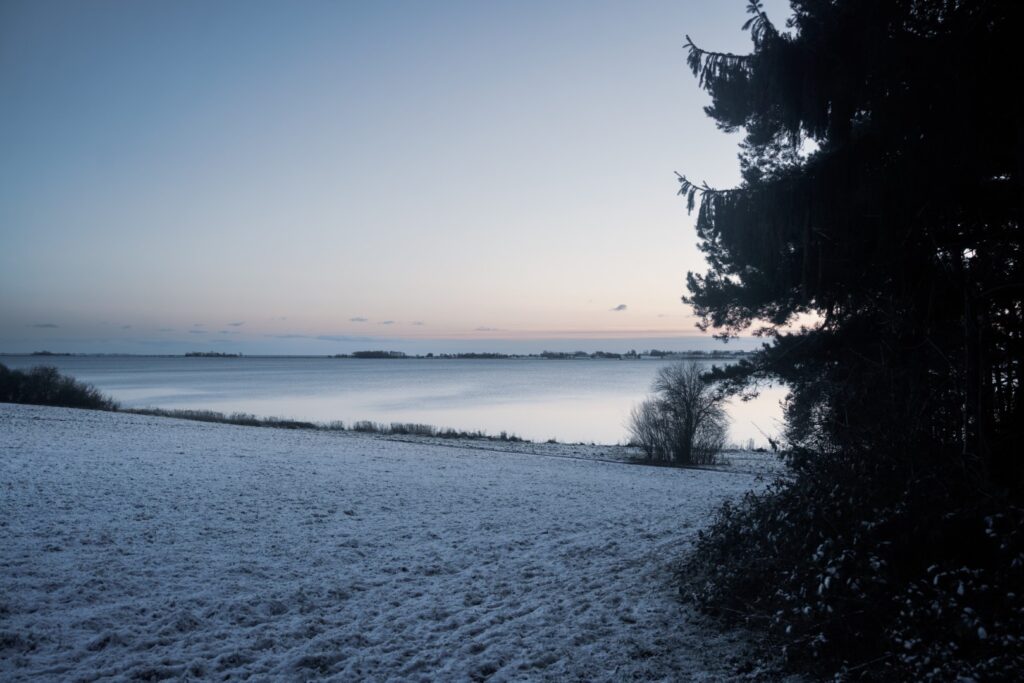
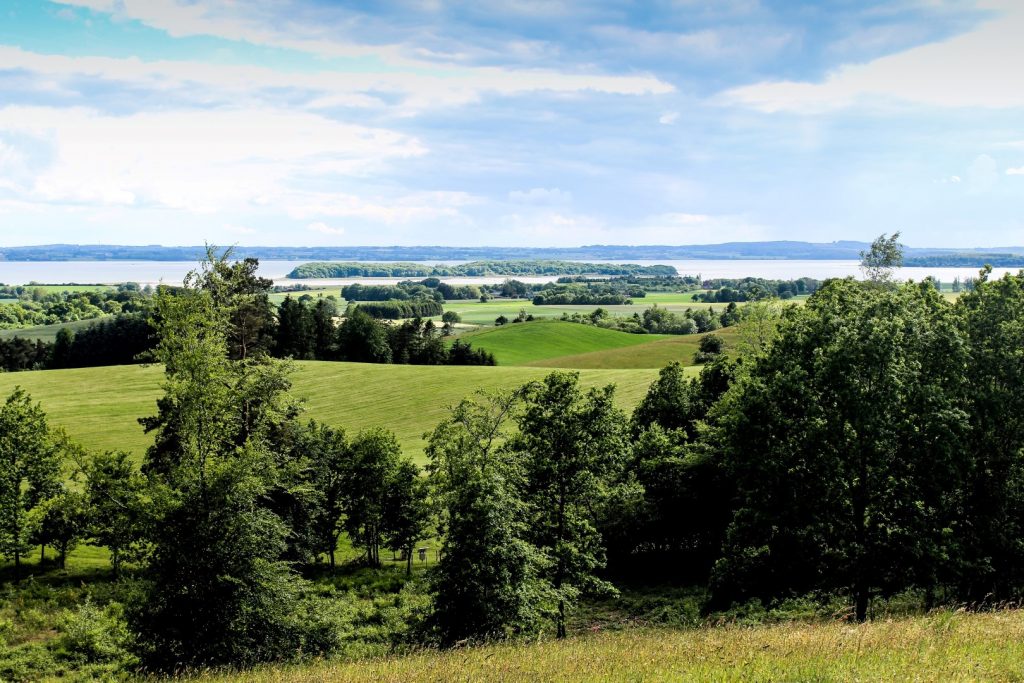
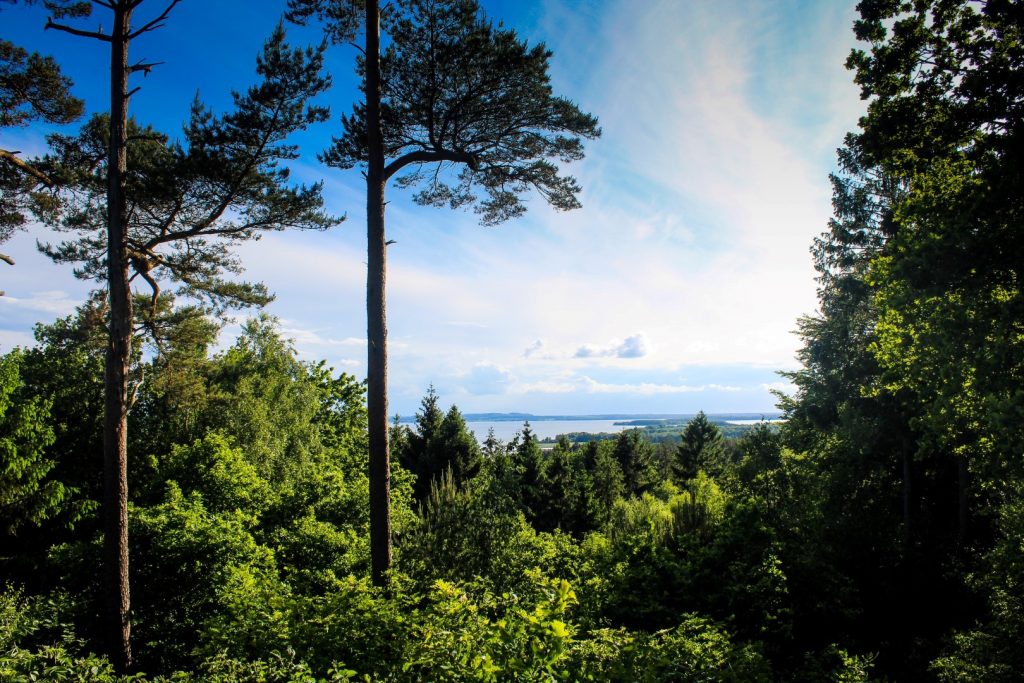
6. The wild island of Vorsø
Vorsø is a very special island as it’s one of the last true wildernesses in Europe.
The small island is located in Horsens Fjord close to where I grew up. It’s a nature preserve, protected since 1928. Access is limited, and it’s only possible to visit on a guided tour a few times every year. The reason why it’s so difficult to visit is because authorities want to allow nature to take its course with as little human interference as possible. The island has a large colony of cormorants as it was the only place in the country where they were never hunted. So-called invasive species live freely on Vorsø. Fallen trees are not removed, and literally nothing is regulated.
Only two people live on the island, ranger Jens Gregersen and his wife. If you decide to visit Vorsø, Jens will be your guide. While exploring Vorsø is an adventure in itself, getting there makes the experience even more exciting. Since the water is too shallow for a boat, you’ll have to wade the 700 metres from the mainland over to the island!
Read more: The island of Vorsø: Where wilderness prevails
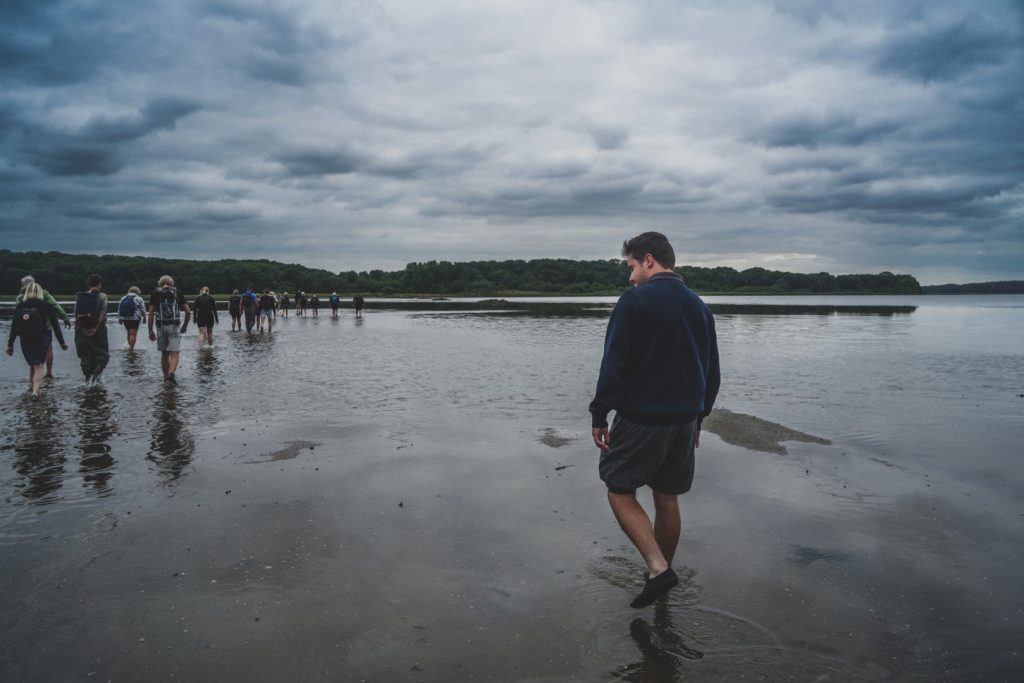
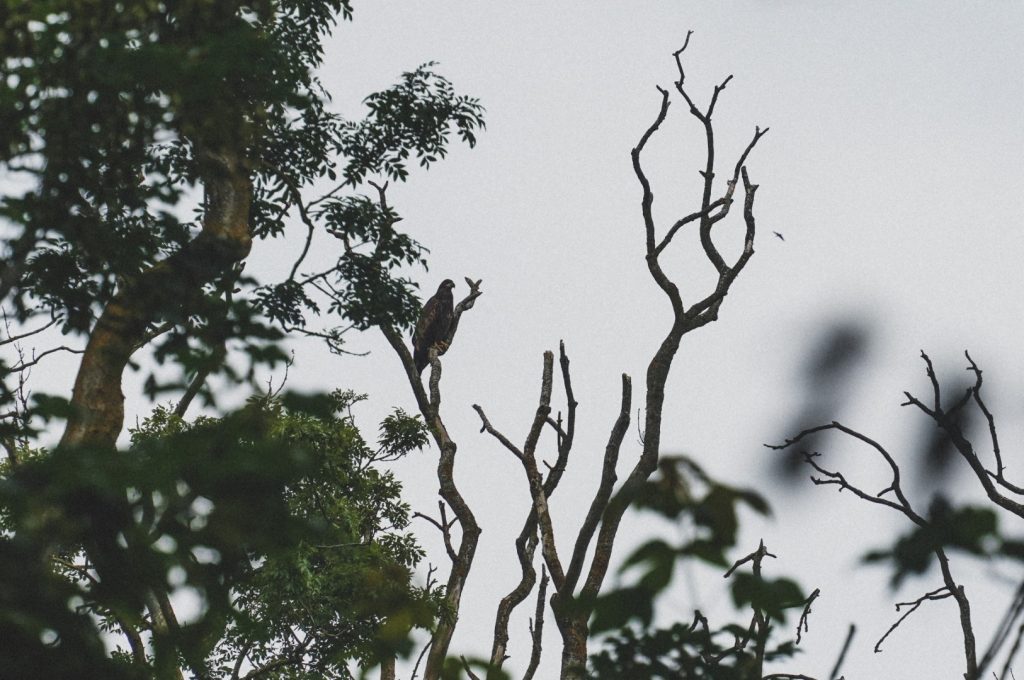
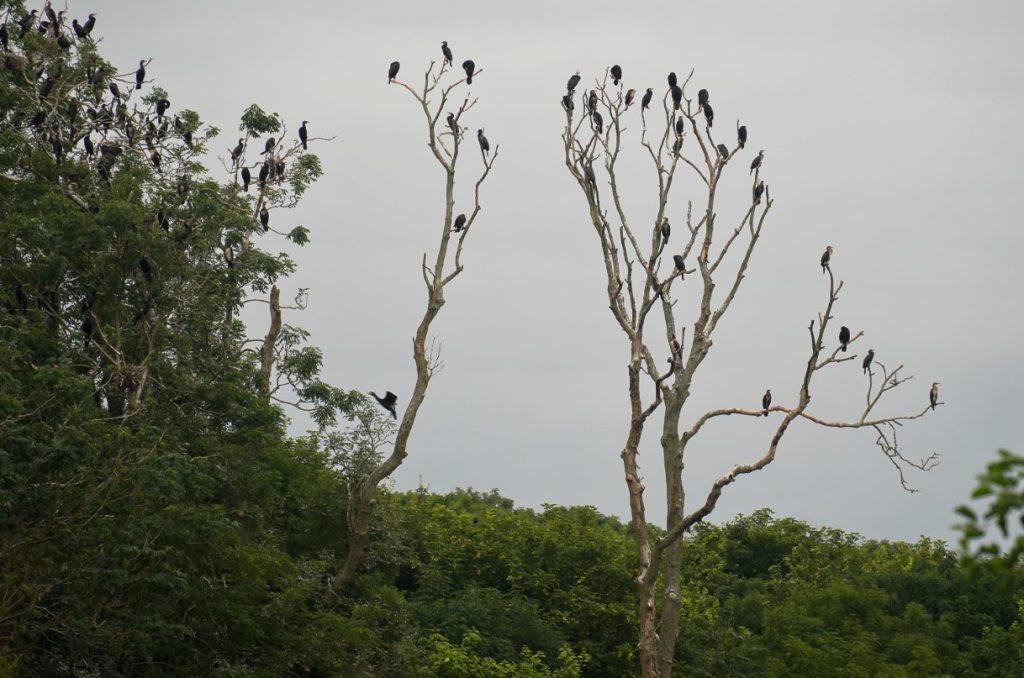
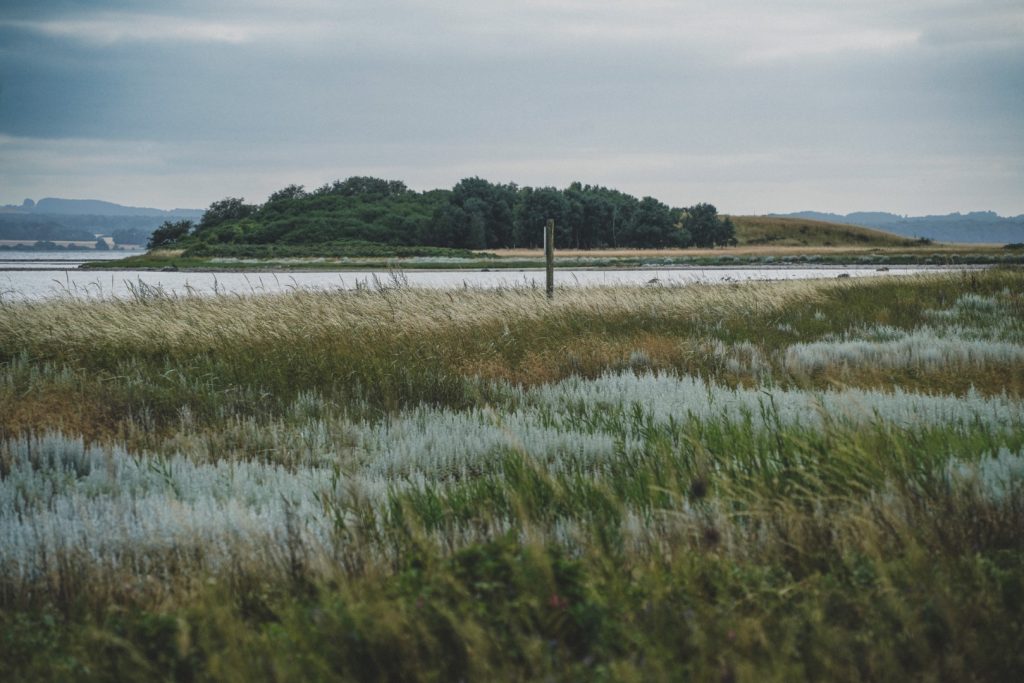
7. Endelave, the rabbit island
19 kilometres off the shore of Jutland in the middle of Horsens Fjord, lies the beautiful island of Endelave, known for its large number of wild rabbits.
Endelave is one of my favourite islands in the country, not only because wild rabbits are such a rare sight elsewhere, but because it’s incredibly cozy and naturally beautiful. The island is home to a small village and several scattered farms, all surrounded by heather moorland, beach meadow and oak forests.
I recommend spending at least one night on Endelave as the rabbits mostly come out at sunset and sunrise. While you’re there, take the opportunity to go horseback riding on the beach, visit the cliffs at Klinten for sunset and hike the 21-kilometre route, Kaninoen, around the entire island!
Read more: The island of wild rabbits: A weekend of activities on Endelave
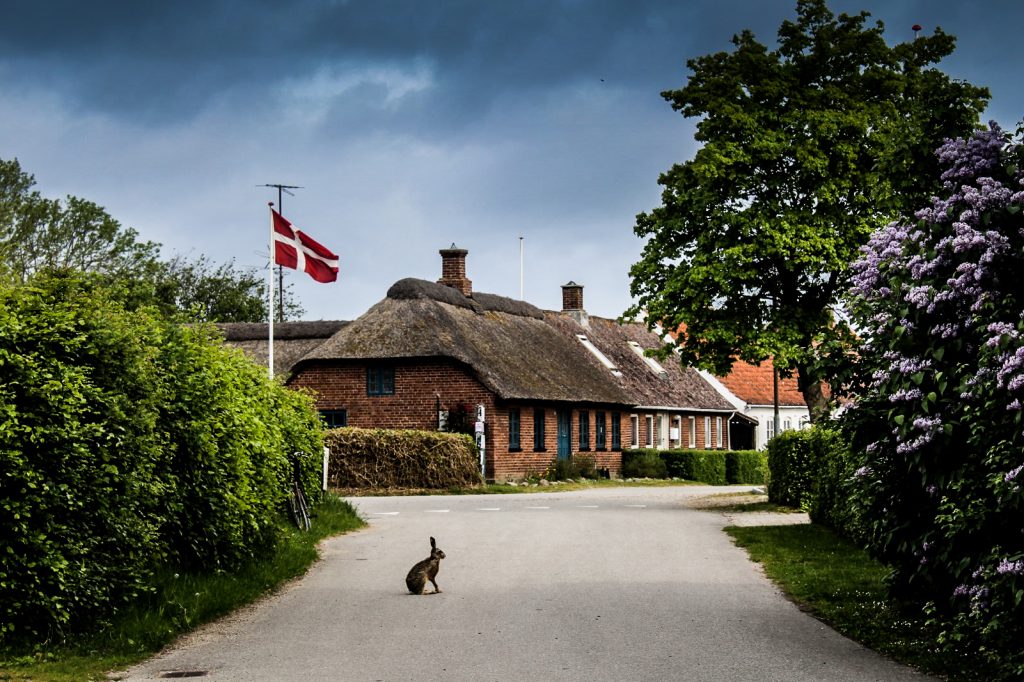
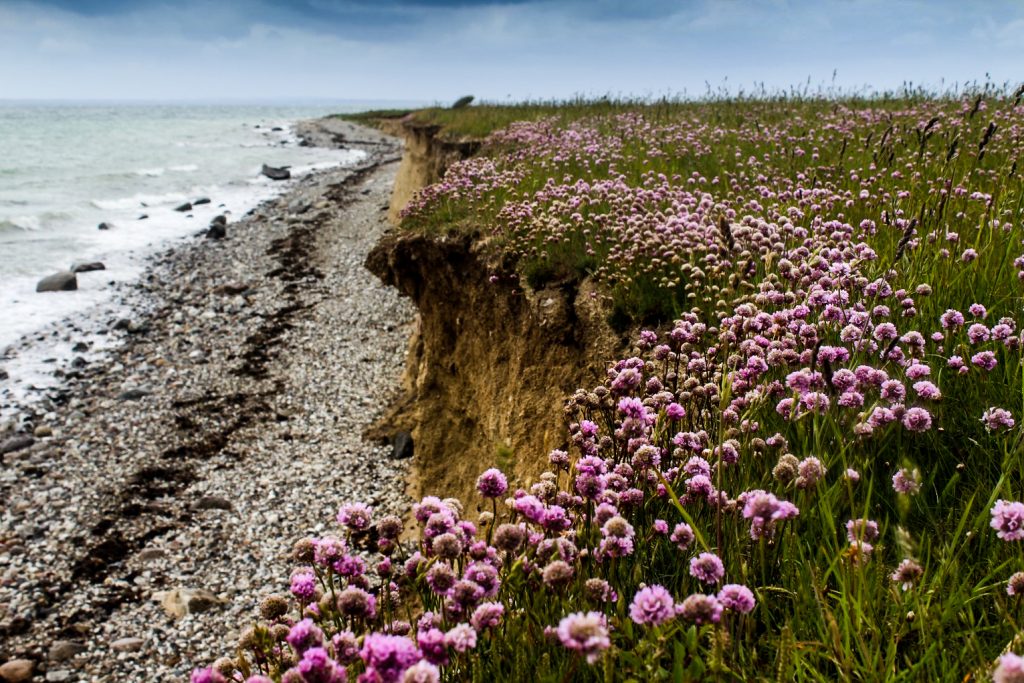
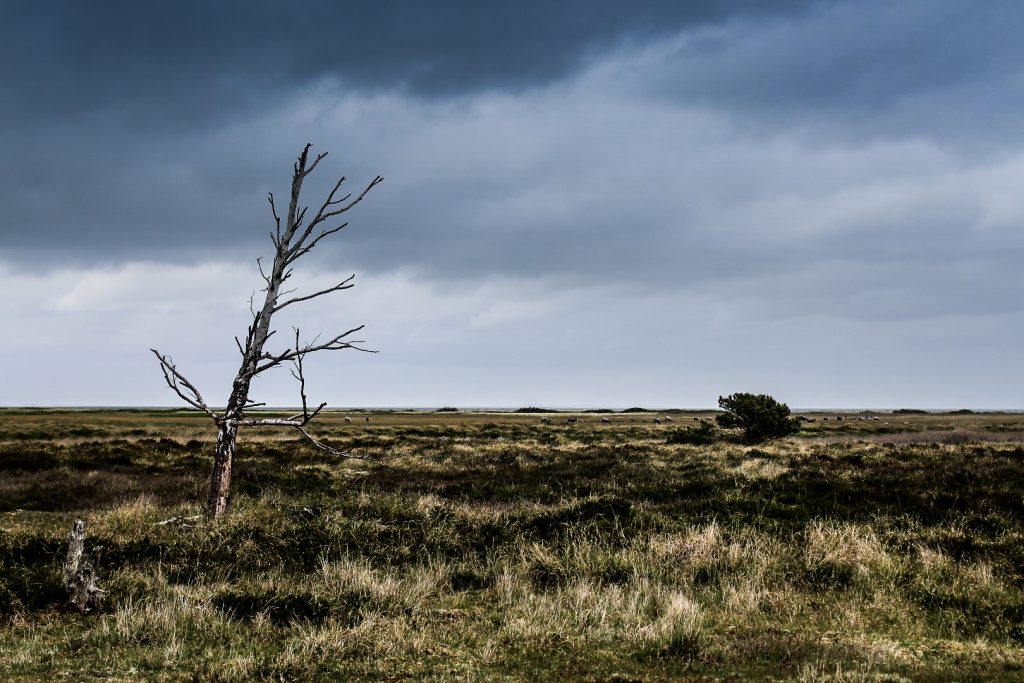
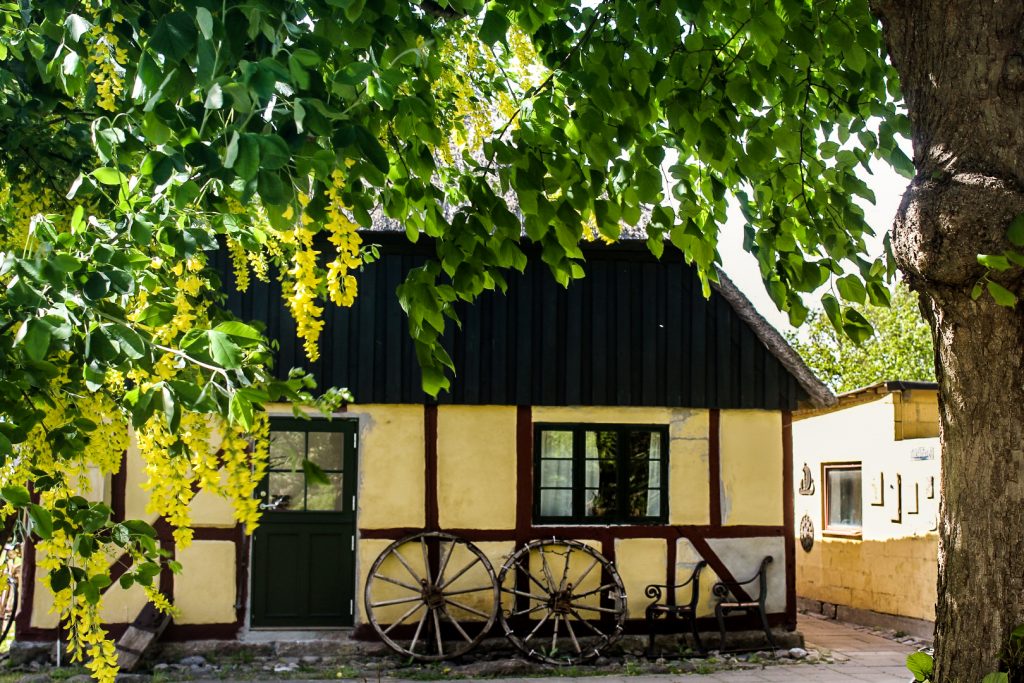
8. The car-free island of Tunø
Tunø is my favourite island in Denmark and it always has been. I grew up in the only harbour town that has connections to the island, so I’ve been there many times both as a child and an adult. I might be biased, but I can assure you that Tunø is well worth a visit, even if you’re not from around here.
The main draw of Tunø is its complete solitude. No cars are allowed on the island, so the only sounds you’ll hear are bird chatter, leaves rustling and the laughs of children.
Life on Tunø is slow and serene and the atmosphere is quite special. It’s an island I’ve always recommended to travellers who want to experience the best of Denmark in a small package – from lush forests, sandy beaches and high coastal cliffs to a cozy village, rural farms and a church tower that also functions as a lighthouse. Tunø has something to offer for everyone!
Read more: A weekend on Tunø, a car-free island in the Kattegat Sea

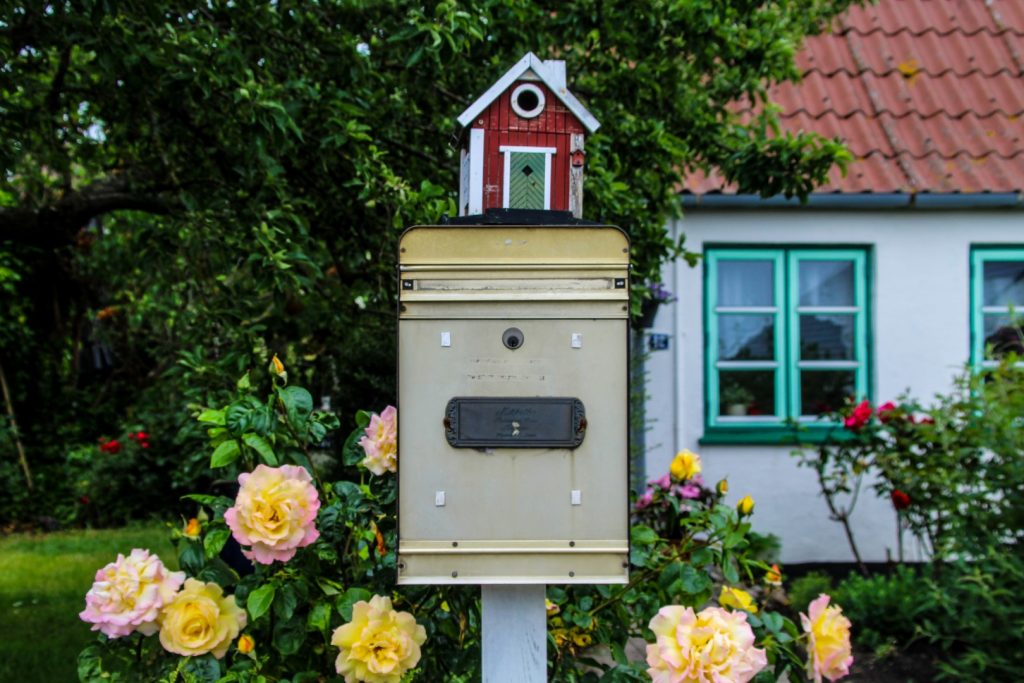
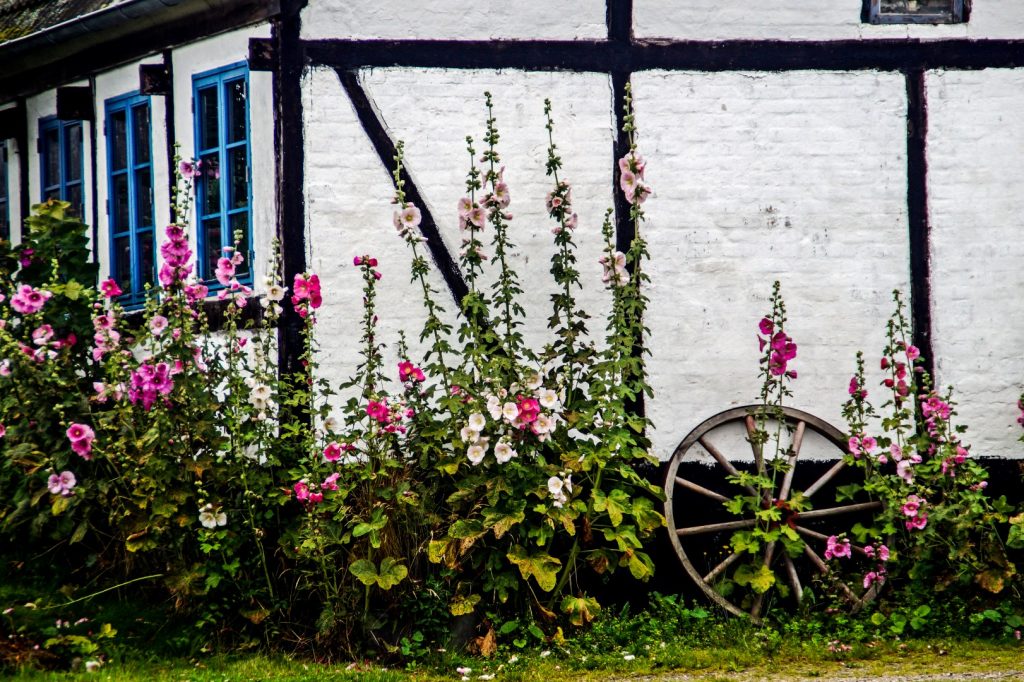
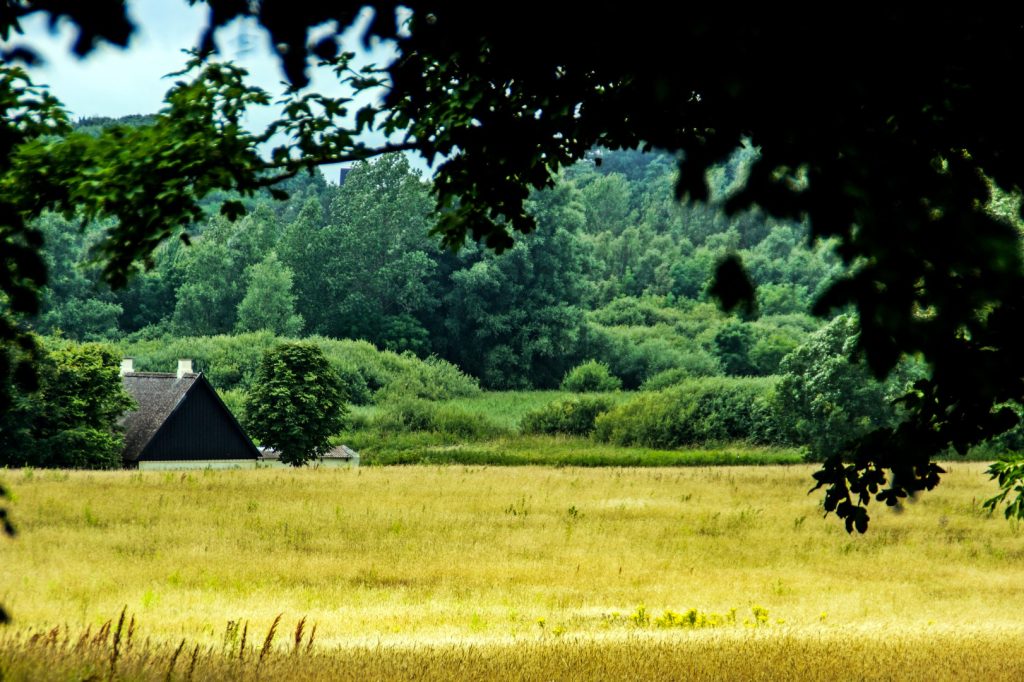
9. The quaint town of Ærøskøbing
Denmark has a lot of quaint cobblestone villages, but none as cozy as Ærøskøbing, located on the island of Ærø in the South Funen Archipelago.
With rows of historic half-timbered cottages, small crafts shops and atmospheric cafés lining the cobbled streets, Ærøskøbing is nothing short of a fairytale town. The little town has been inhabited since the 12th century and the oldest still–standing houses date back to 1645! It feels as though time has stood still in Ærøskøbing while the rest of the country moved on.
If you decide to make the trip over to this gorgeous town, don’t forget to explore the rest of the beautiful island – it’s worth it!
Read more: November on Ærø: A weekend getaway to a unique Danish island
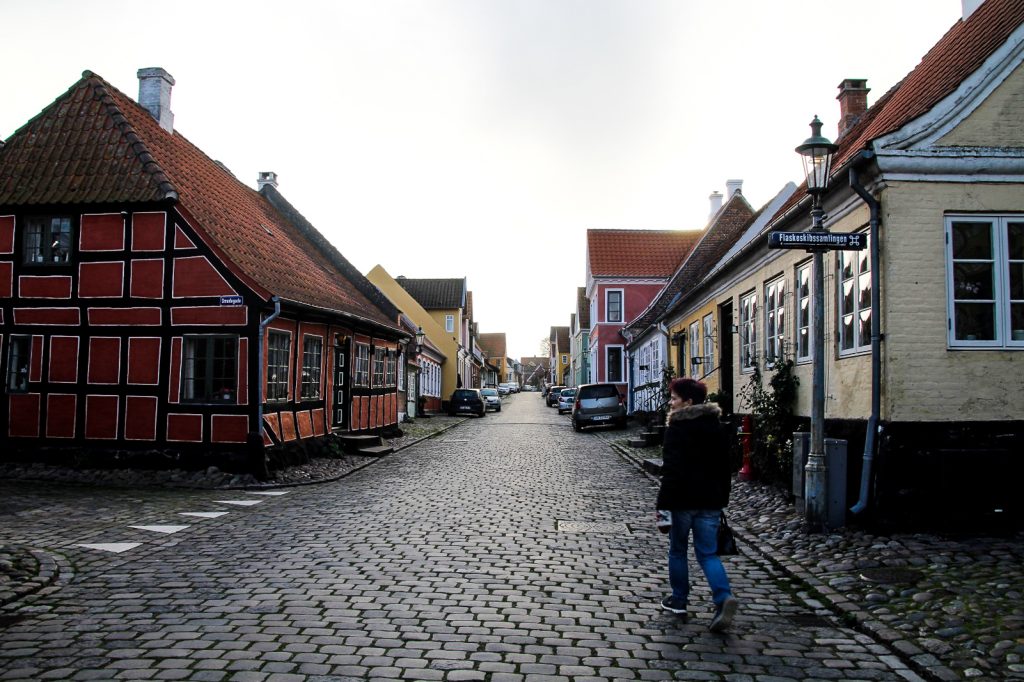
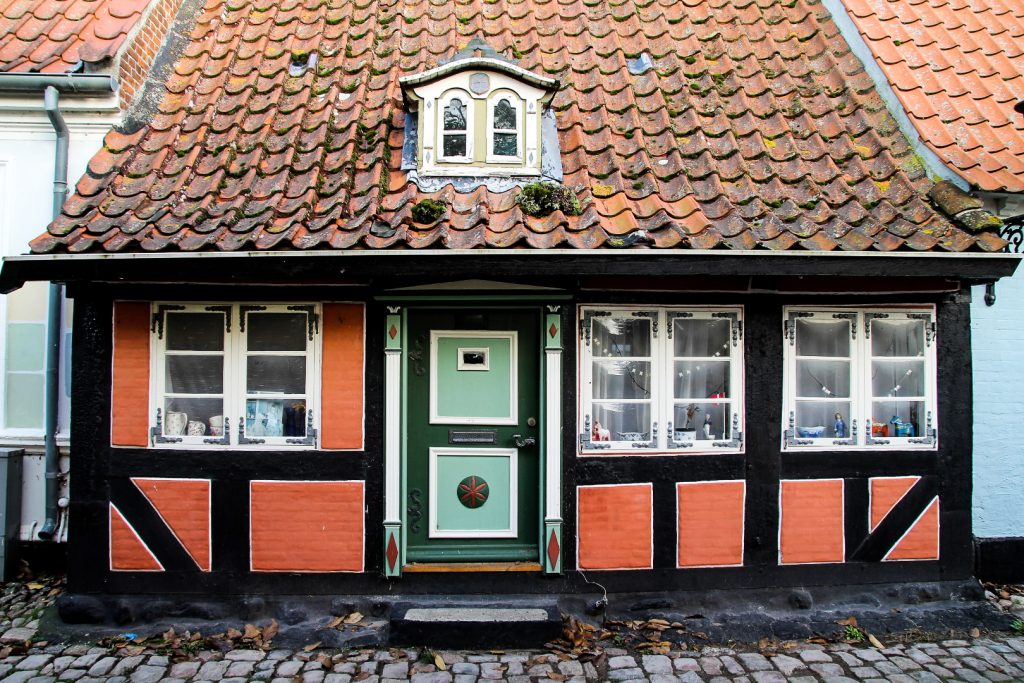
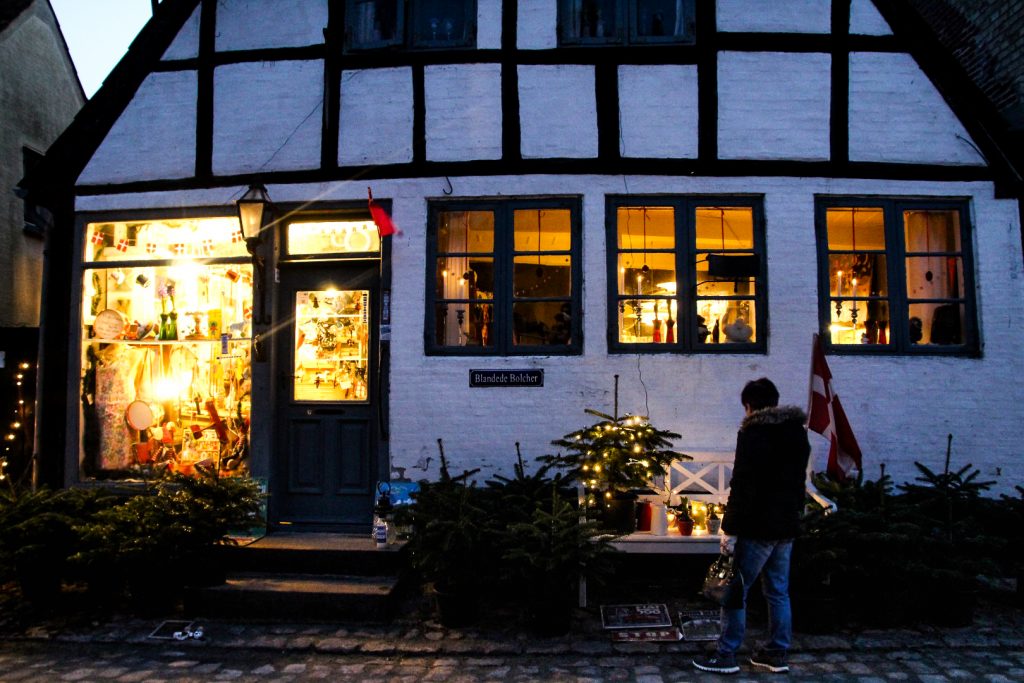
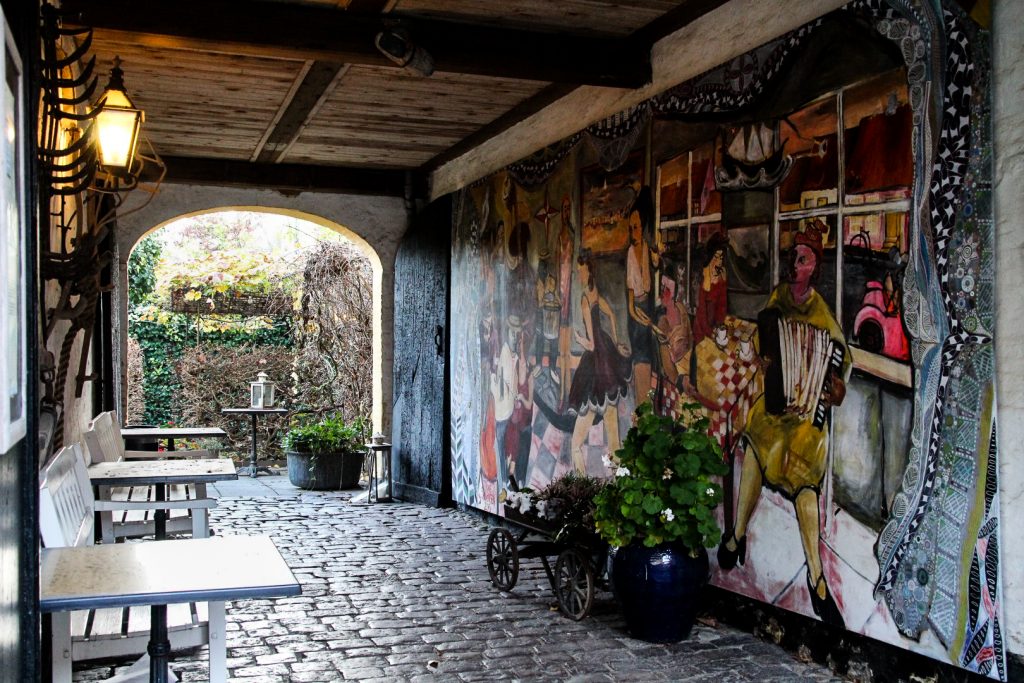
10. Hirsholm, a bird paradise
Hirsholm is the only inhabited island of the Hirsholmene archipelago, which make up the northernmost island group in Denmark. The archipelago is protected as a nature reserve, and these islands are a true paradise for birds. Only one person lives on the island, and while some might think that sad, I can’t imagine a more peaceful existence.
Despite the very small human population, it is easy to visit Hirsholm on a boat trip from Frederikshavn in the north of Jutland. Even though the island is tiny, I recommend staying for at least a few hours. Explore the tiny village that was once home to a thriving community of around 200 people, climb the lighthouse to see the island from above, visit the village church to see its Catholic altarpiece, take a dip in the ocean and explore the two bunkers from WW2 found on the island.
Read more: Blog post coming soon…
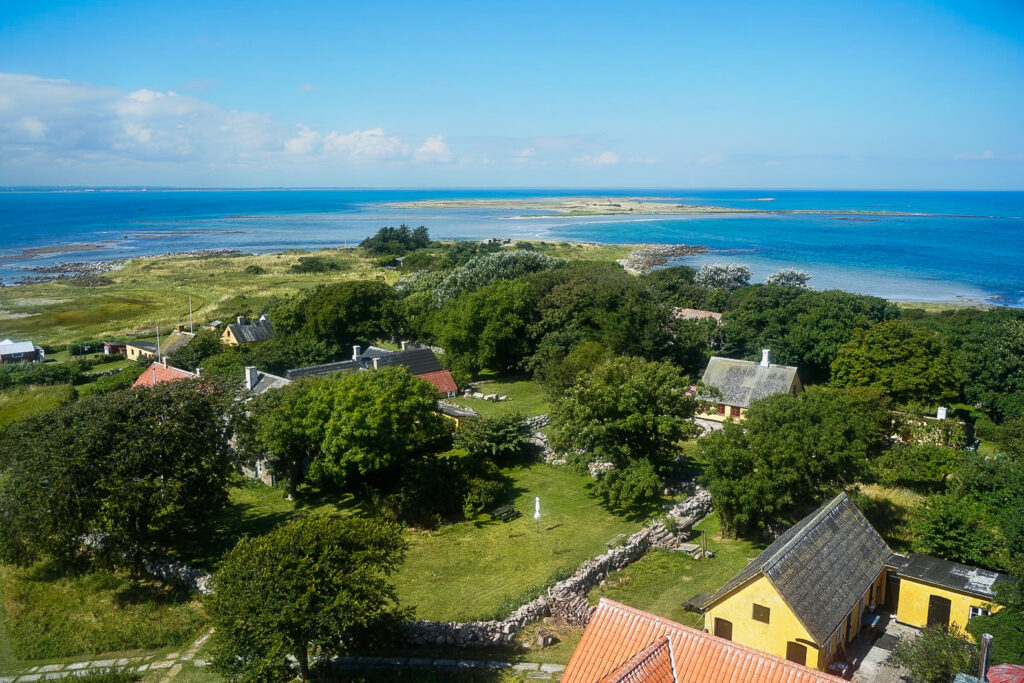
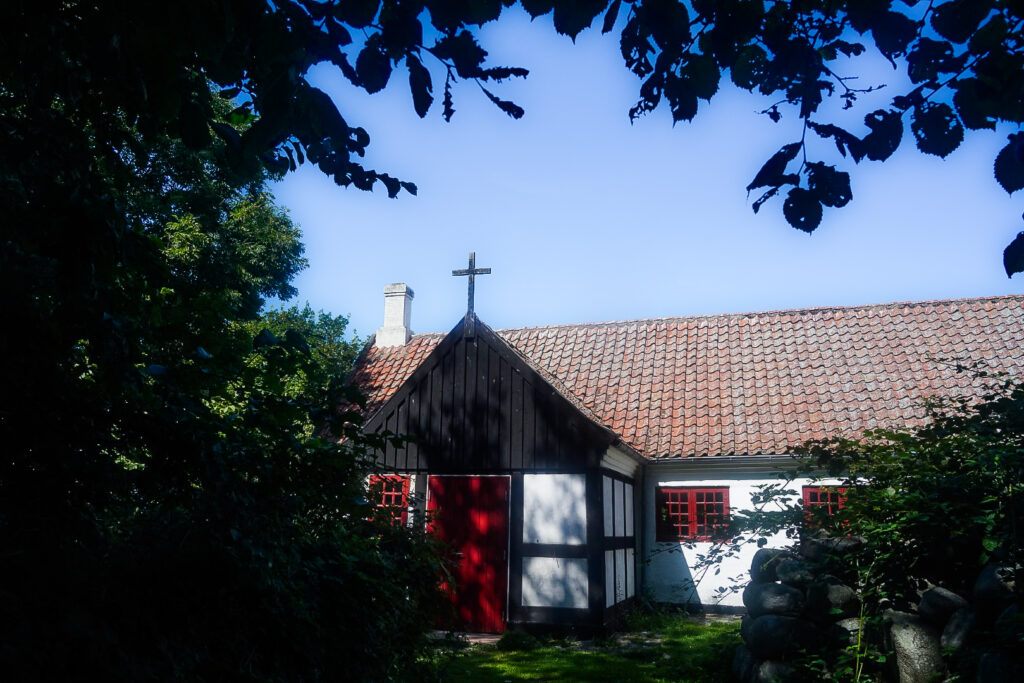

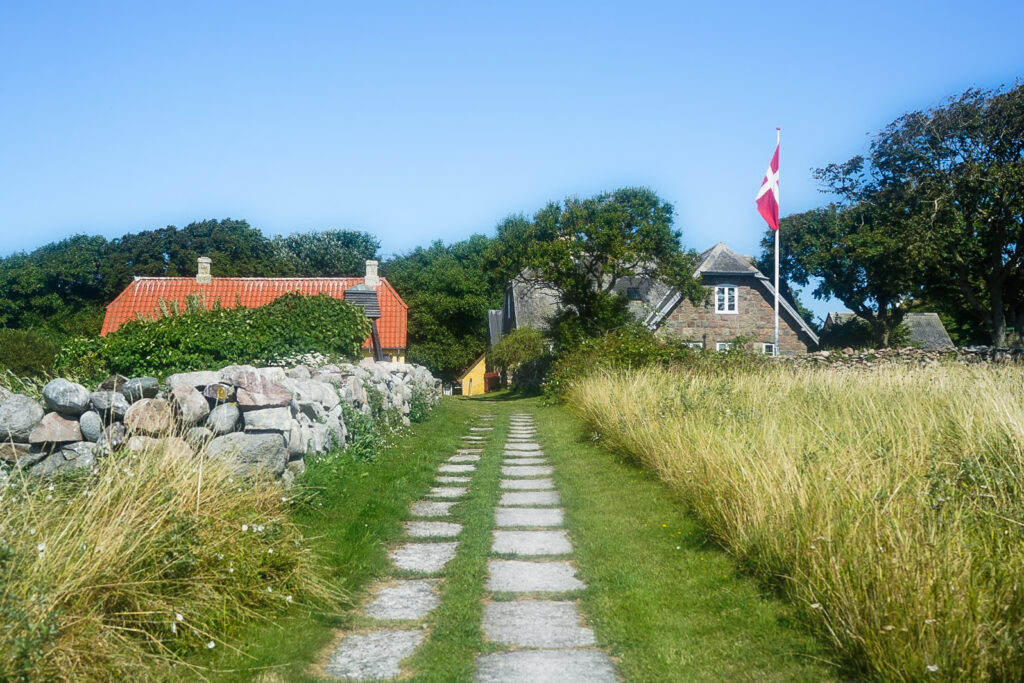
11. Albuen, a distinctive cultural landscape on Lolland
At the far end of Nakskov Fjord on the island of Lolland sits the 7,5 km long headland of Albuen. It separates the Langeland Strait from the fjord, and its low grassy dunes along extensive beaches provide shelter for thousands of migratory birds. Albuen is a special nature reserve which has been influenced by 600 years of human activity, remains of which can still be seen dotted across the landscape.
Albuen was once home to a thriving community, as difficult as that is to imagine given how isolated the place is. The few houses left standing in Nakkehuse bear witness to this time. Albuen was a successful and important fishing harbour until well into the 20th century. The last fisherman died in 2002, and the last permanent resident moved from Albuen shortly after.
You can choose to either sail to Albuen from Nakskov or walk along the isthmus leading to the main part of the headland. There, you’ll find a lighthouse from 1958, an old pilot station in use as a museum, the old school which was closed in 1947, remains of a Late Medieval herring market as well as the abandoned village of Nakkehuse.
Of all the places that I explored on Lolland while I lived on the island from 2020-22, Albuen was my favourite!
Read more: A journey to Albuen, a unique cultural landscape at the edge of Lolland & A weekend on Nakskov Fjord: Camping, sailing and hiking on the edge of Lolland
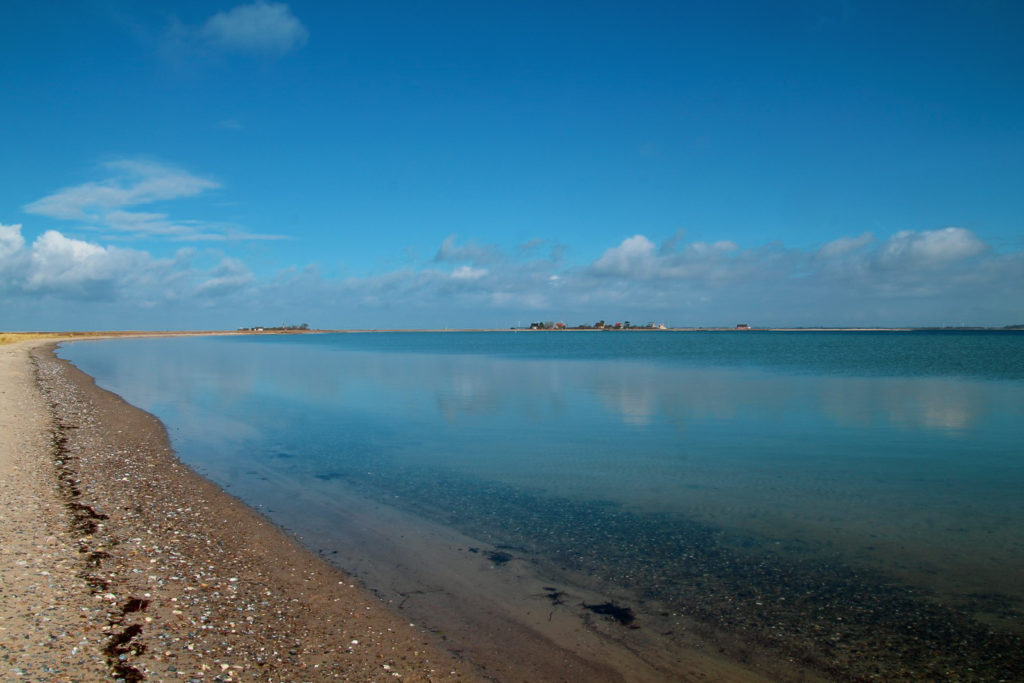
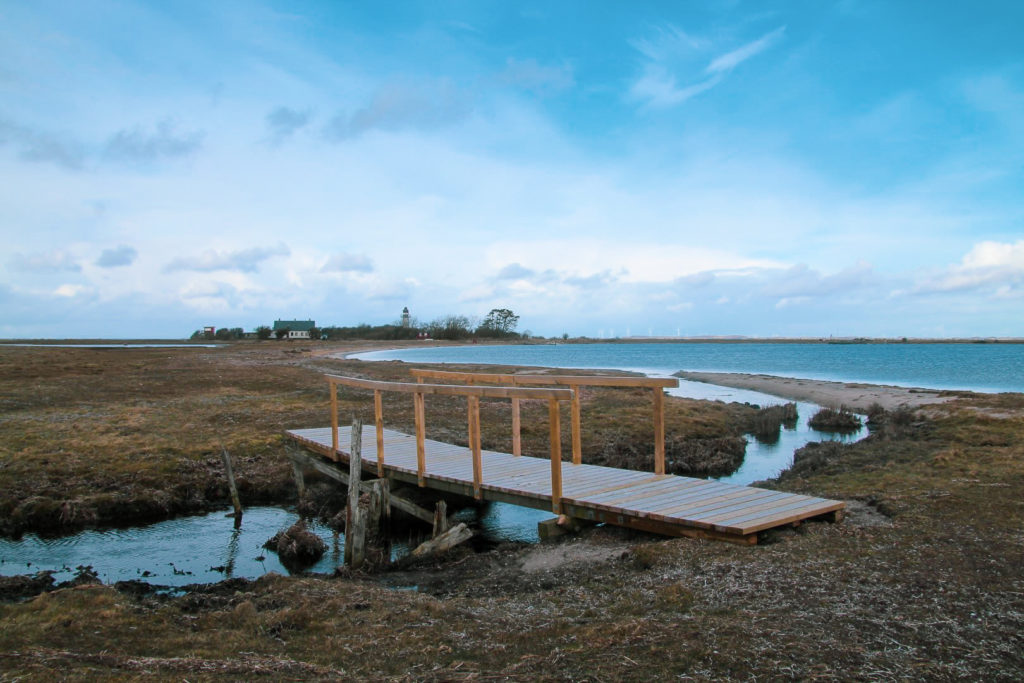
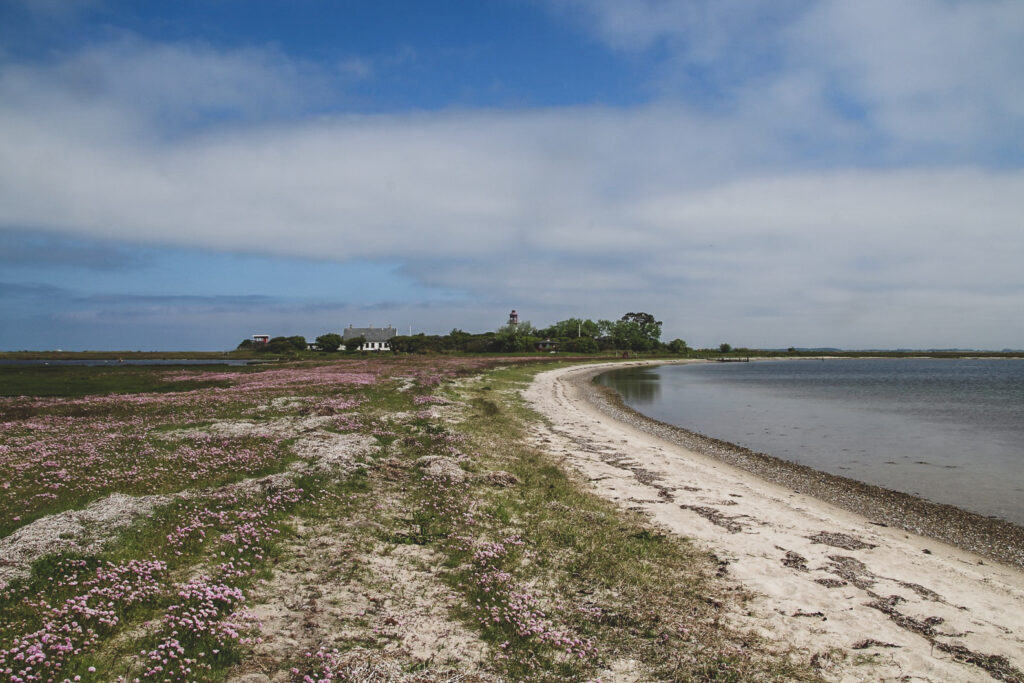
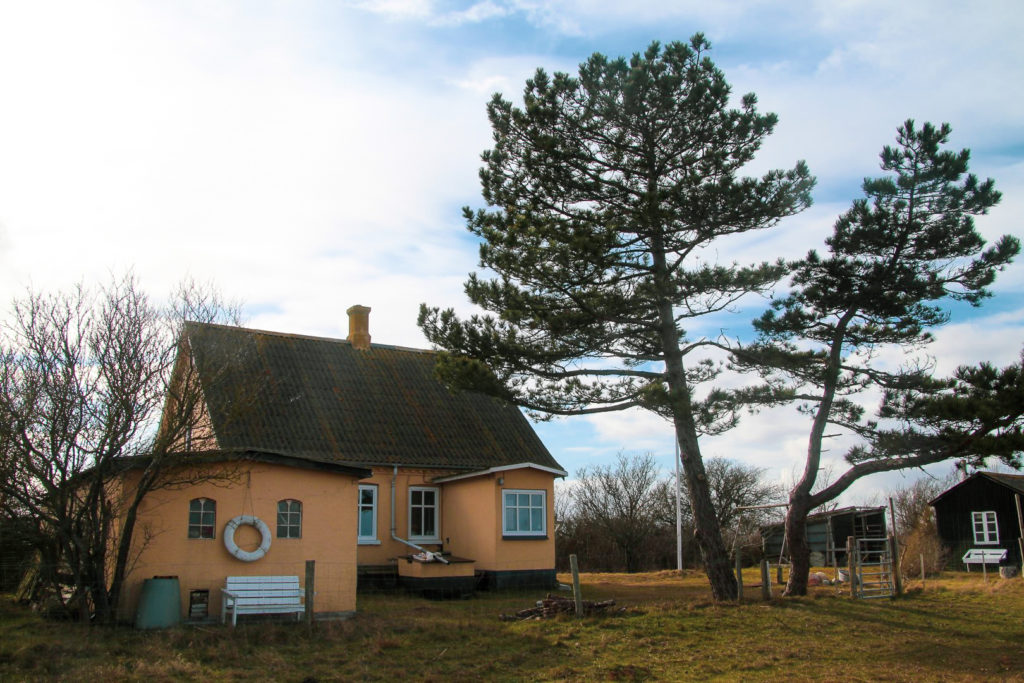
12. The unique island of Nekselø
Nekselø is a small island in Sejerøbugten off the coast of Havnsø on Zealand.
Nekselø is home to just 20 people who live on farms spread throughout the island. The island is protected due to its nature that is unique in Denmark. Nekselø consists of a row of hills that rise to 41 meters above sea level. The landscapes changes from high beach cliffs with trees shaped by the wind on the west coast to lush meadows on the east coast. The island gets considerably less rain and more sunshine hours than the rest of Denmark, which has resulted in steppe-like landscapes where flora and fauna that is otherwise not found in Denmark is able to thrive.
Since Nekselø is very small, it’s possible to walk around the whole island in a few hours. The island is easily reached from Copenhagen and thus makes the perfect day trip from the city.
Read more: A day trip to the hilly island of Nekselø
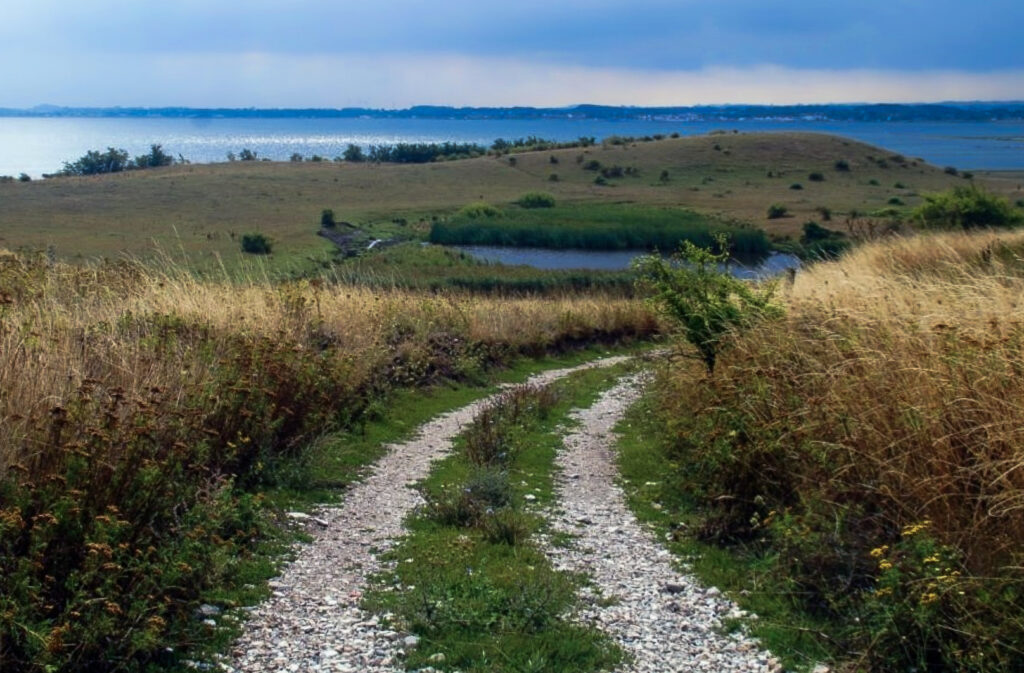

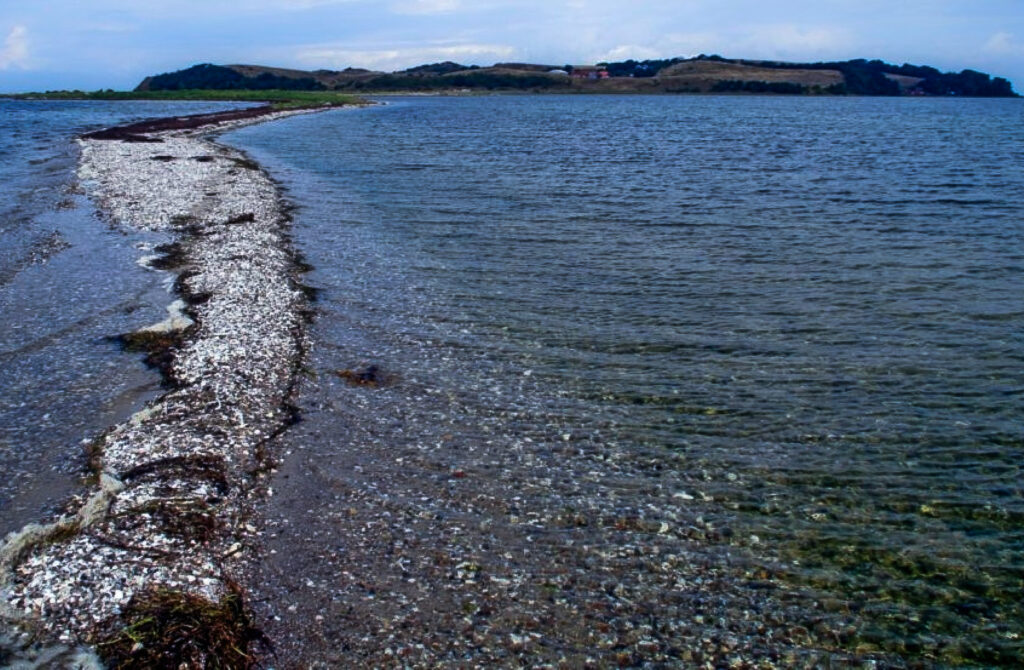
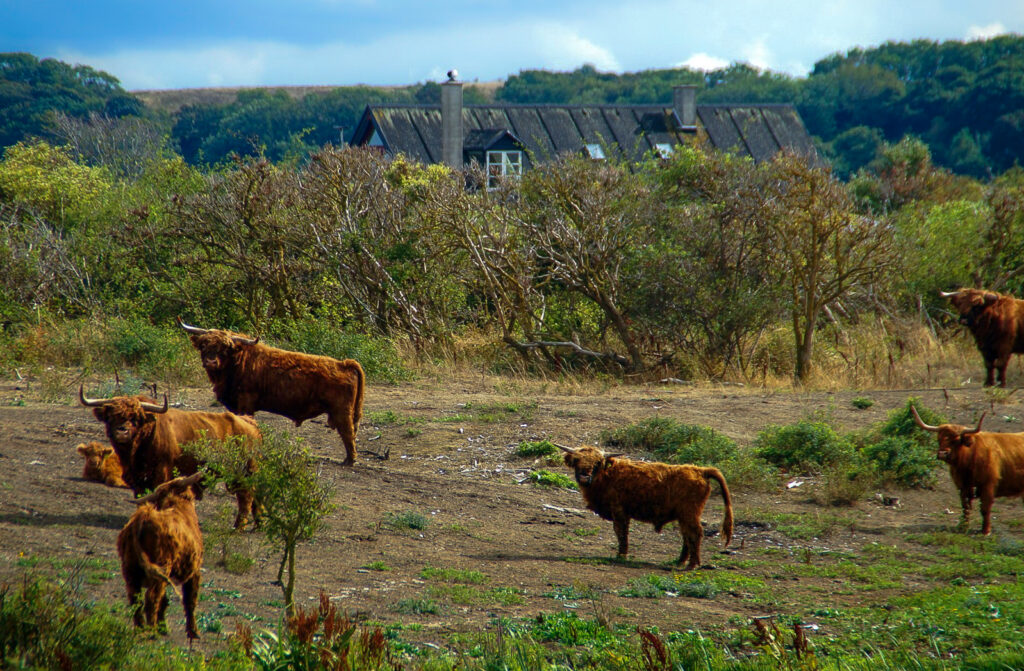
13. Femø, a hilly island in Smålandshavet
Femø is a small island with just 110 inhabitants, located off the coast of Lolland in Smålandshavet. Unlike its neighbouring islands, Femø is very hilly and offers gorgeous views throughout. It’s home to two small villages, Sønderby and Nørreby, the latter of which was my favourite. Nørreby is full of yellow-painted half-timbered thatched cottages, which are beautifully spread out amongst trees and a gorgeous park with bronze sculptures.
If you decide to visit Femø, I recommend walking around the whole island. There is no coastal trail, but the country lanes will take you to the most beautiful spots. Don’t forget to visit the island church, which was built in the 16th century – several centuries later than most of Denmark’s medieval churches!
When I first visited Femø, a blanket of snow covered the island. For my next visit, I went in the summer and camped for the night. Those two visits were very different but both wonderful and made me realize that the Danish islands are just as idyllic and cozy to visit in any season.
Read more: A day on Femø, a frosty winter wonderland & Summer on Femø: Camping on an idyllic island in southern Denmark
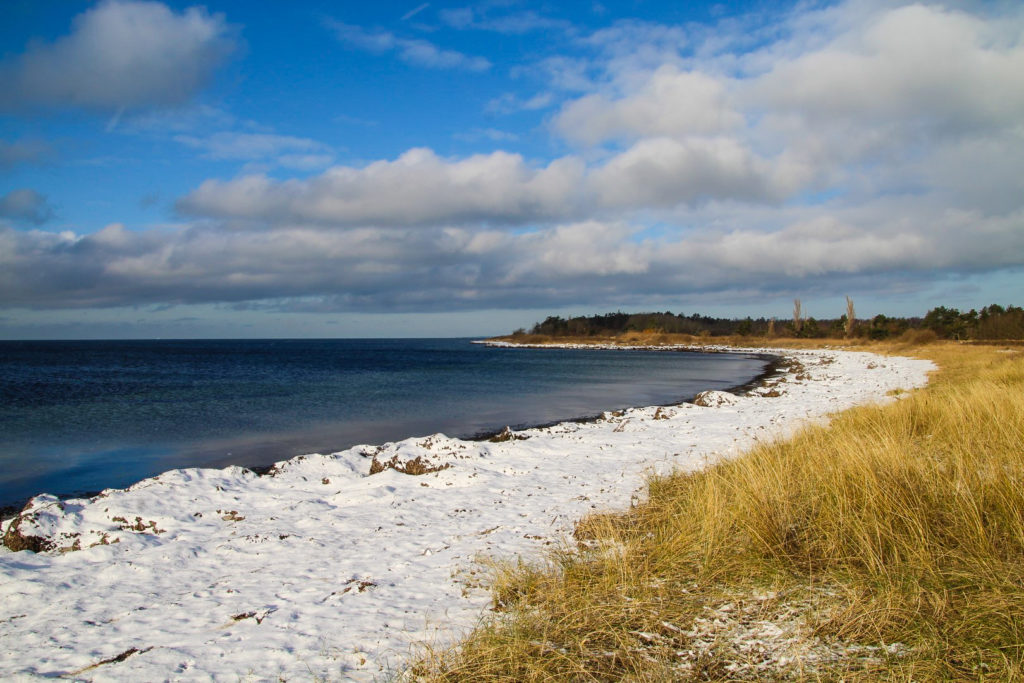
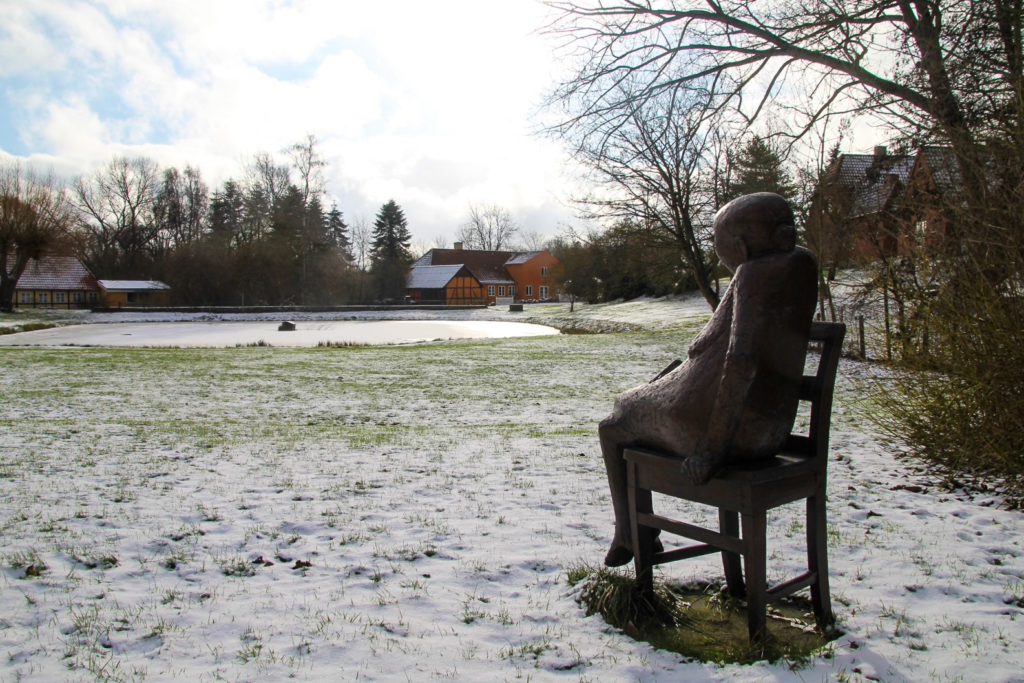
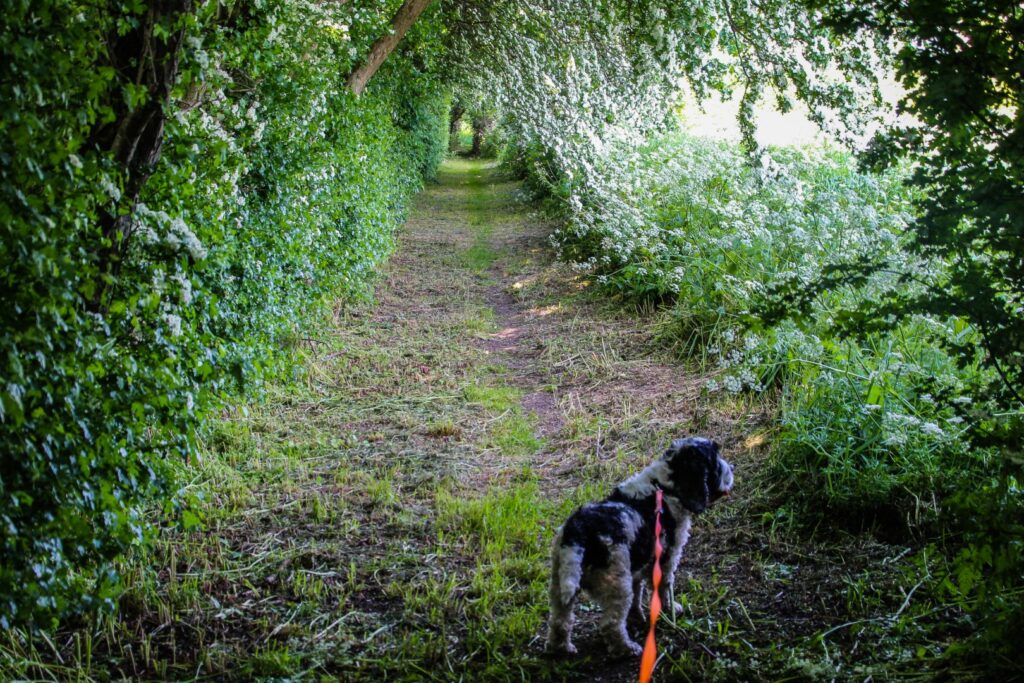
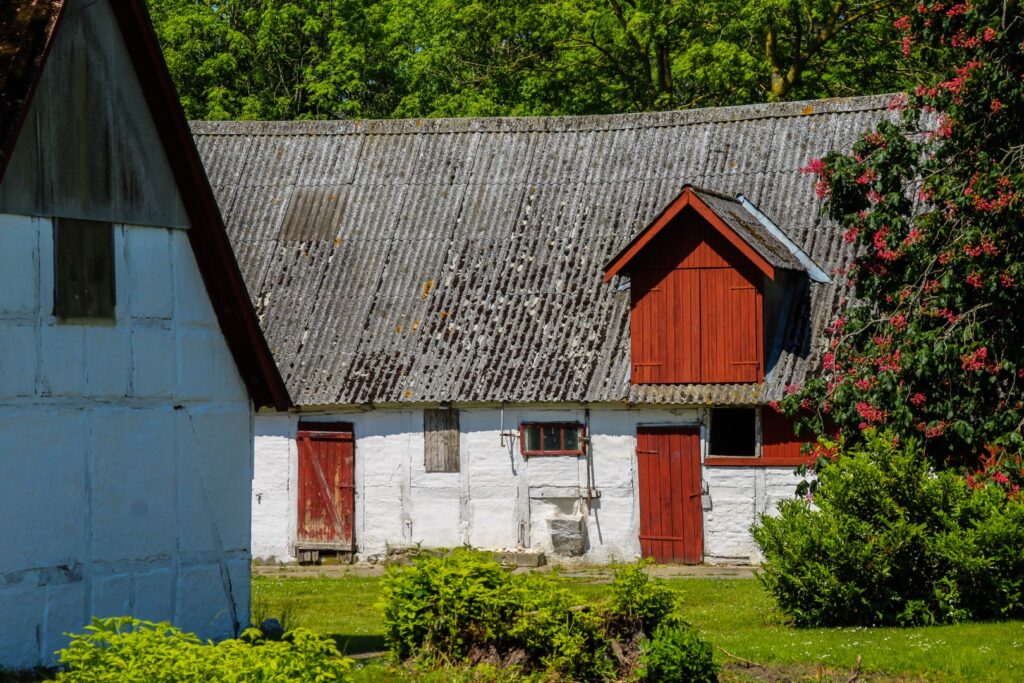
14. Lejre, the heart of National Park Skjoldungernes Land
When I lived in Copenhagen during my undergrad years, I worked part-time in an open air museum located in the middle of Lejre’s gorgeous nature. Over the course of two summers, I fell in love with the place and now regard it as the most beautiful area on Zealand.
Getting to Lejre from Copenhagen is very easy. It’s merely 30 minutes away by train, but you will arrive in a completely different world. A world of solitude where you’ll be surrounded by rolling hills and vast forests.
As the heart of the national park Skjoldungernes Land, Lejre has so much to offer with plenty of hiking trails, cozy museums and quaint little villages to explore, as well as the most beautiful open air museum that I’ve ever been to.
Read more: Introducing the Land of Legends: My new job & Athra Gathering ’18: Stone Age festival at the Land of Legends
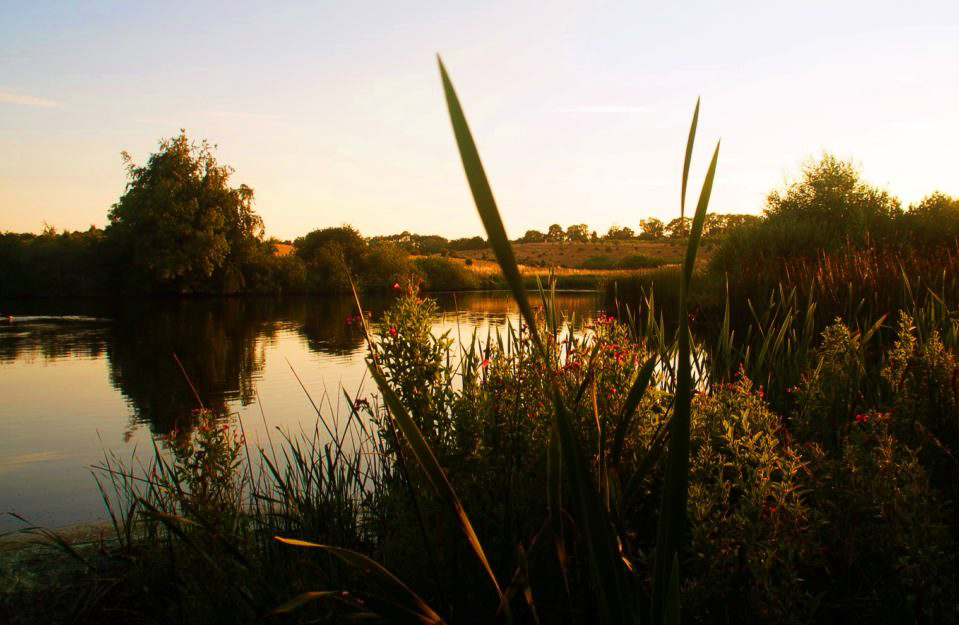
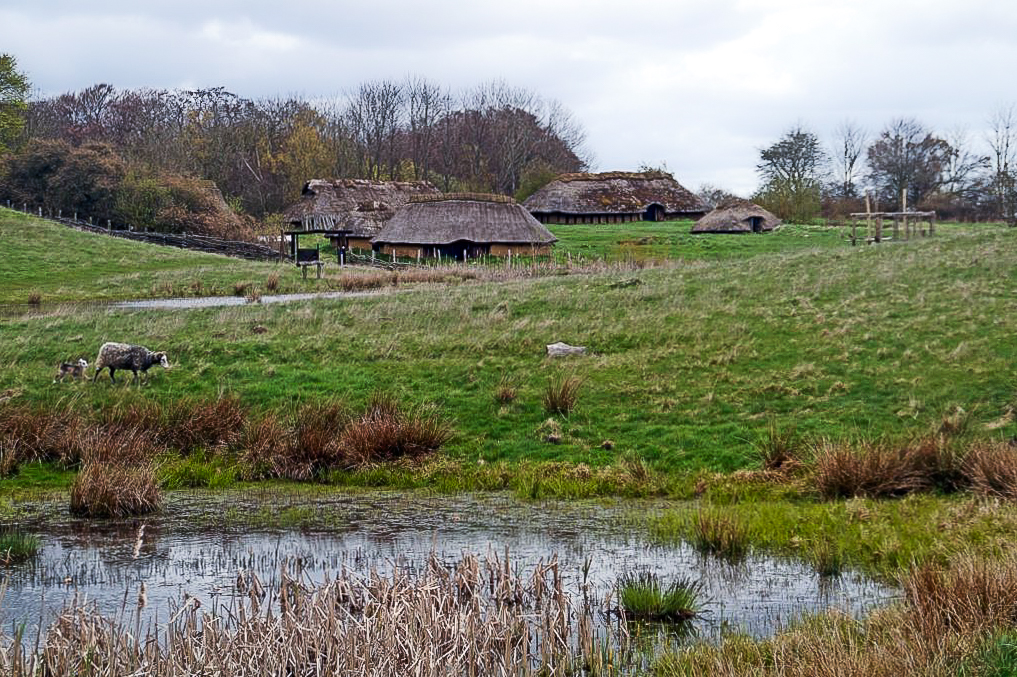

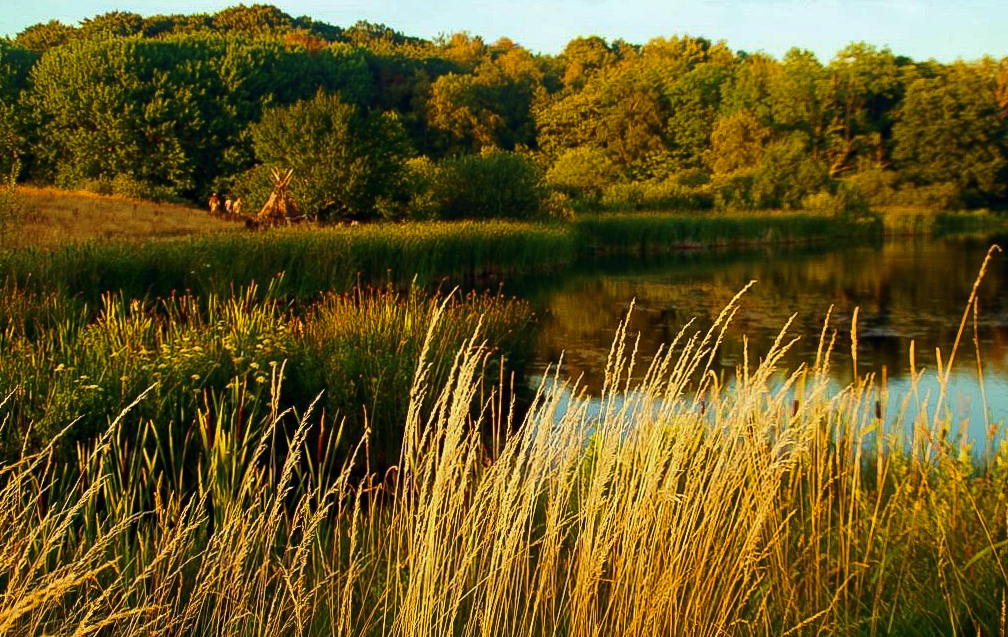
15. Northeast Falster’s gorgeous coast
The coast of Northeast Falster is as idyllic as Denmark gets. The vast woodlands of Corselitze Østerskov stretch for miles along the sandstone cliffs that line the shore. Within its dark recesses, the forest hides burial mounds and passage graves from prehistoric times.
If you continue down the coast, either by bike or foot, you’ll reach the easternmost point of Falster near the tiny fishing village of Stubbehage. Keep going and you’ll soon set foot in one of the prettiest villages in Denmark, complete with a unique architectural style not found elsewhere in the country – or the world. Thatched half-timbered straw-clad cottages line the narrow streets of Hesnæs. While a few more of this type of cottage can be found on the countryside surrounding Hesnæs, that’s as far as this architectural style extends. It is truly unique to the area!
Another worthwhile place to visit in Northeast Falster is Halskov Vænge, a tiny forest with no less than 72 burial mounds from the Bronze Age and six dolmens from the Neolithic. It also holds Spejderstenen, the largest rock on Falster, which features two prehistoric cup marks!
Read more: Over the rolling hills: A long weekend on northeast Falster
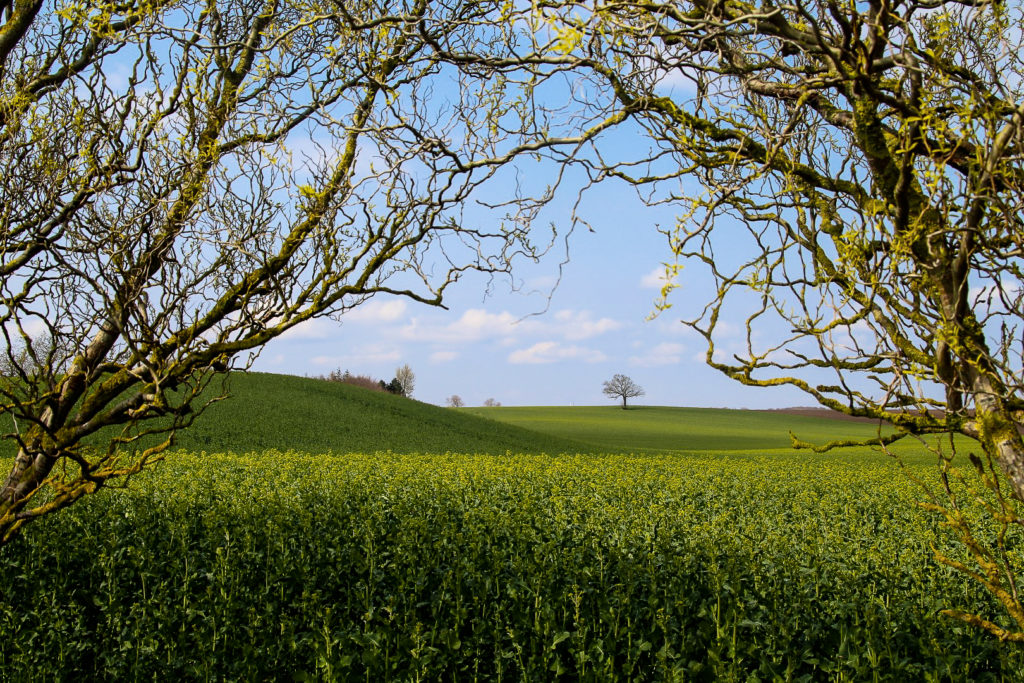
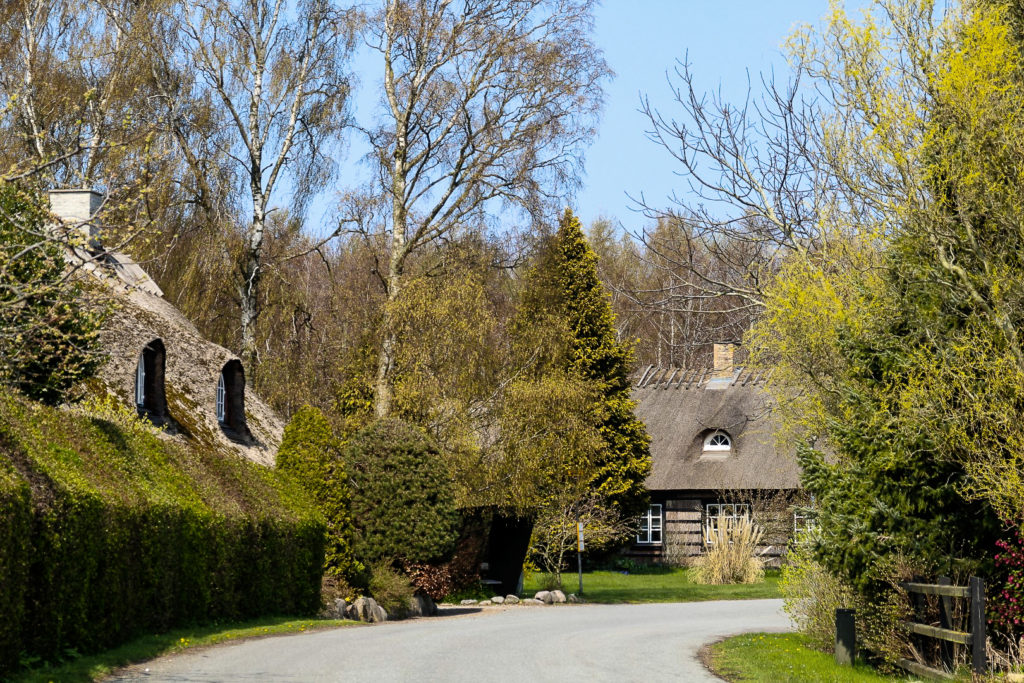
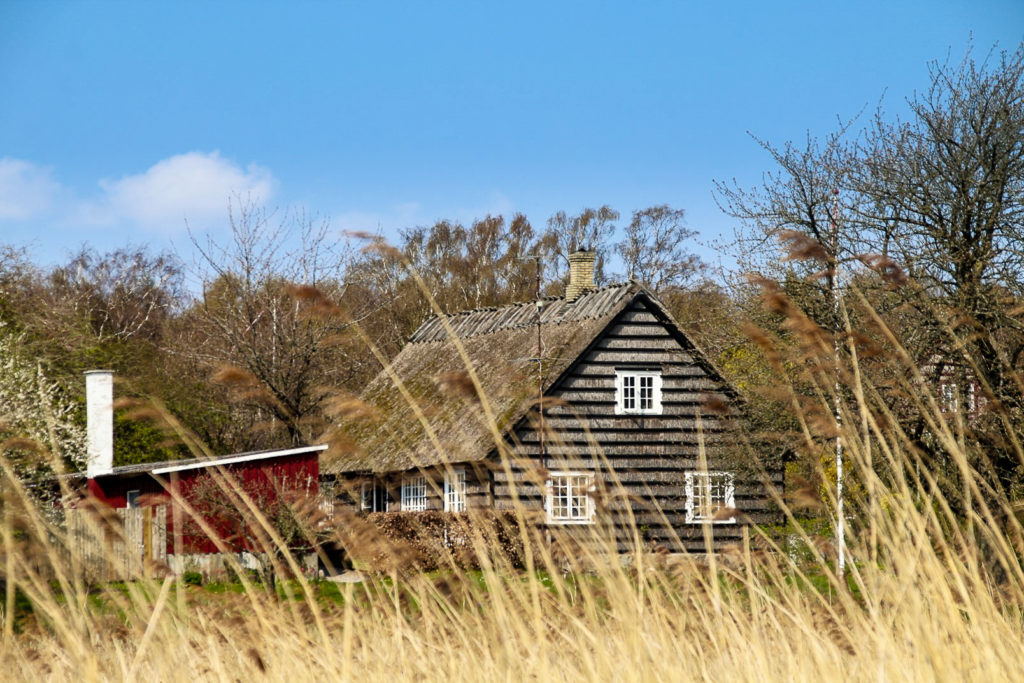
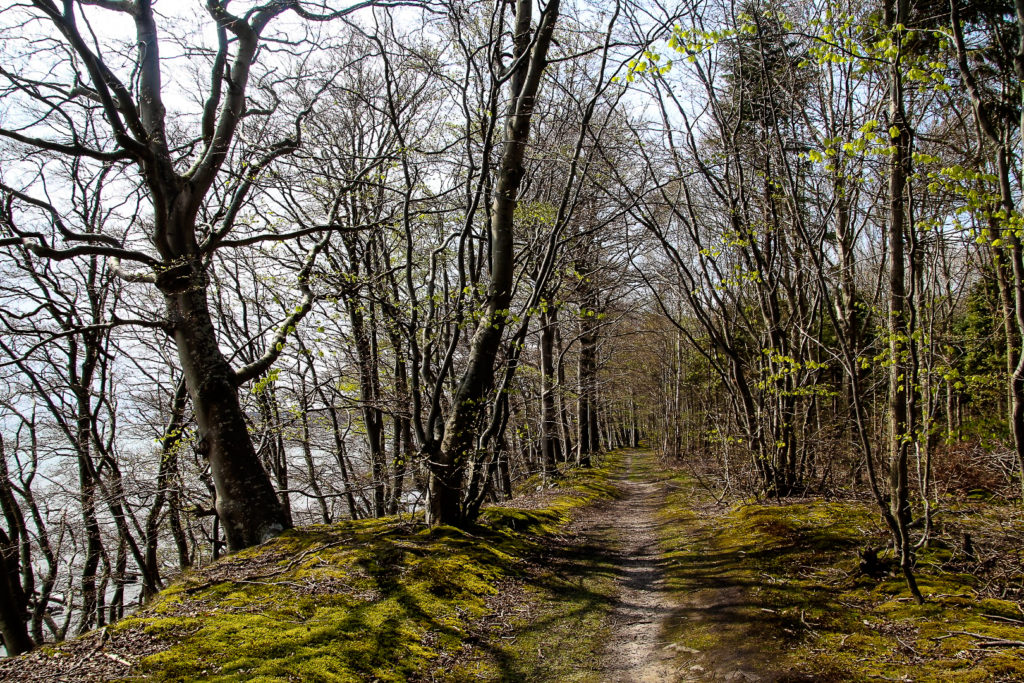
16. The ancient path in Tokkekøb Hegn
Tokkekøb Hegn is a gorgeous nature area in North Zealand with varied landscapes of forest, hills, marshes and lakes, dotted with remnants from prehistoric eras. Hike the 12-kilometre Oldtidsstien (‘The ancient path’) and you’ll pass by dolmens, long barrows and passage graves dating back to the Neolithic, including the well-preserved Dæmpegårdsdyssen, a long barrow from around 3.400 BC.
Tokkekøb Hegn is a great option for a day trip from Copenhagen, especially if you fancy a hike in nature mixed with some interesting archaeology and lots of historic cottages. Just catch the train to Allerød and you’ll soon be on the path to ancient times. If you fancy staying for the night, you can camp for free near Dæmpegårdsdyssen!
Read more: Tokkekøb Hegn: A 12 km hike through a Neolithic culture landscape
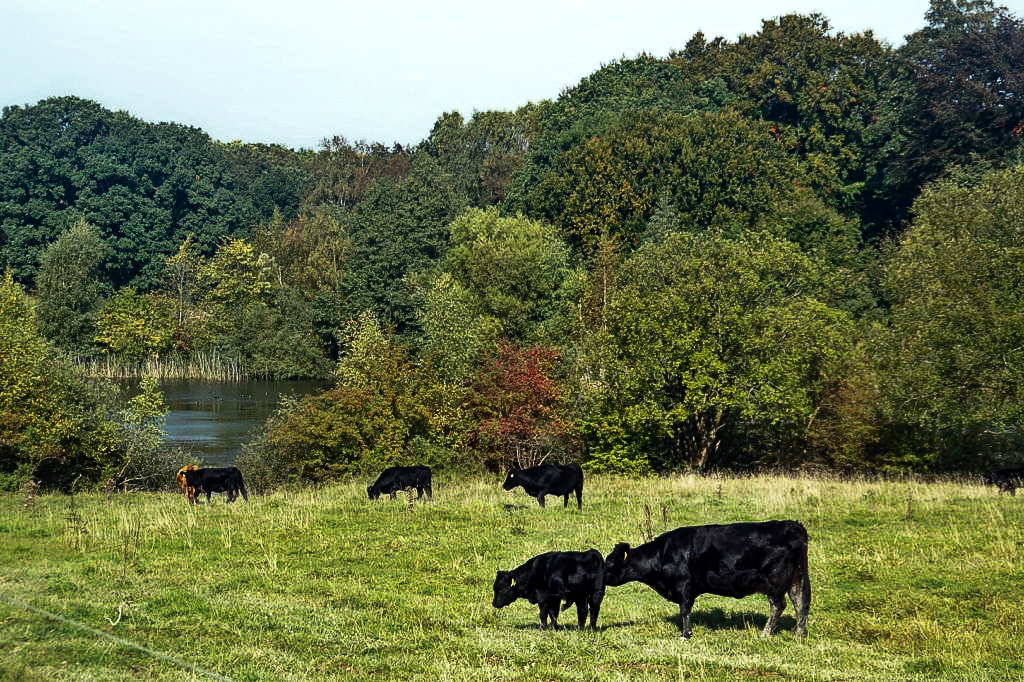
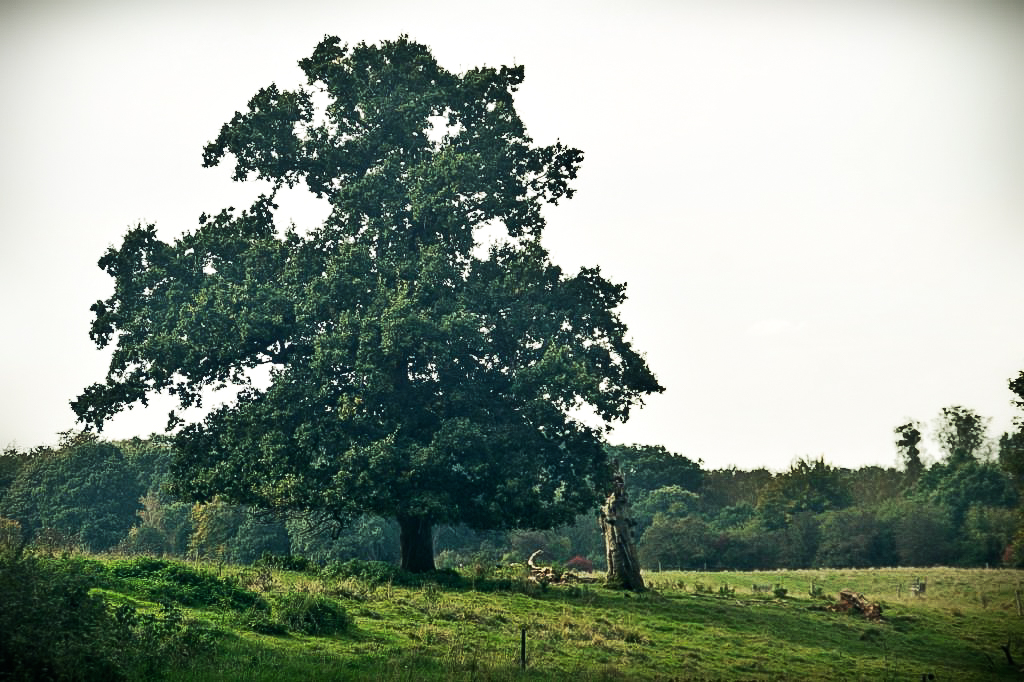
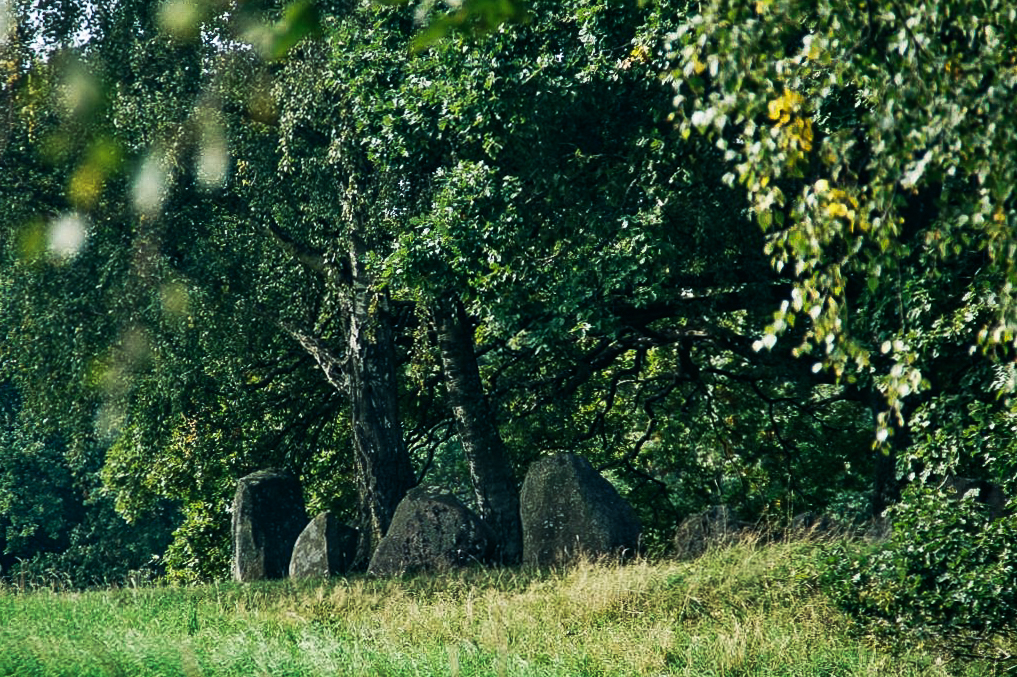
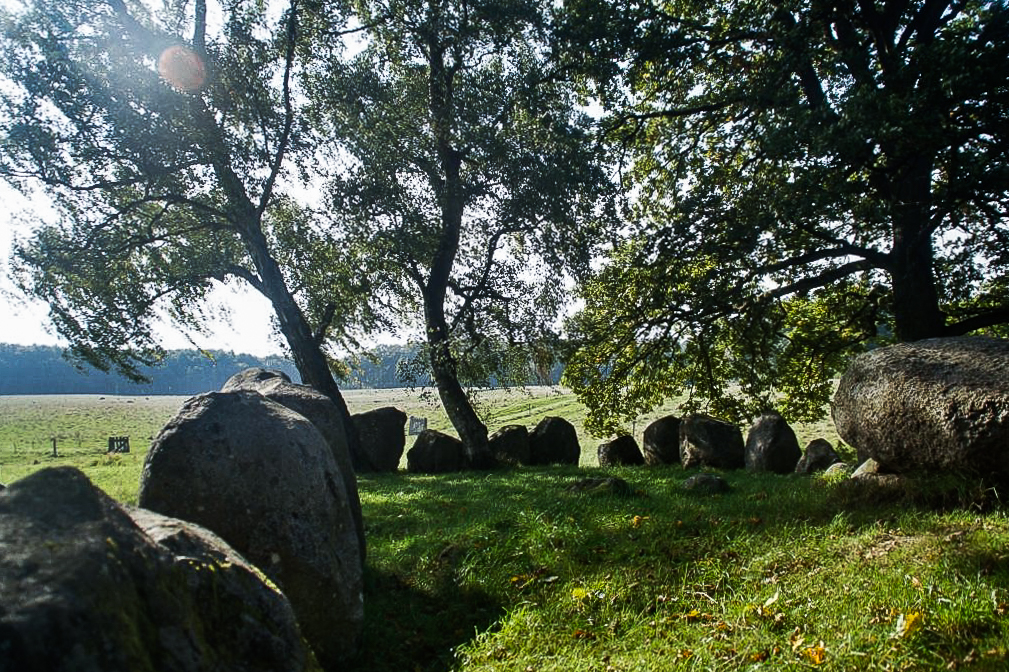
17. The white cliffs of Møn
The White Cliffs of Dover are known all over the world, but did you know that Denmark (and Germany!) has cliffs just like them? To see the white cliffs of Denmark, you’ll have to travel south to the island of Møn, which is connected by bridge to Zealand.
Møns Klint is a six-kilometre stretch of white chalk cliffs that rise up 120 metres from the ocean. The chalk cliffs emerged at the end of the last Ice Age around 11,000 years ago when the ice melted. The cliffs and the surrounding woodlands are protected as a nature reserve. It’s possible to see the cliffs from above, but to get the whole experience, one must climb down the 497 steps to the stony beach, just to stand there and feel so extremely small against the sky-high cliffs!
While you’re there, don’t forget to explore the rest of Møn – and I’d also recommend stopping by the little island of Nyord which is connected to Møn by a small bridge!
Read more: Danish island holiday: To Møns Klint and beyond
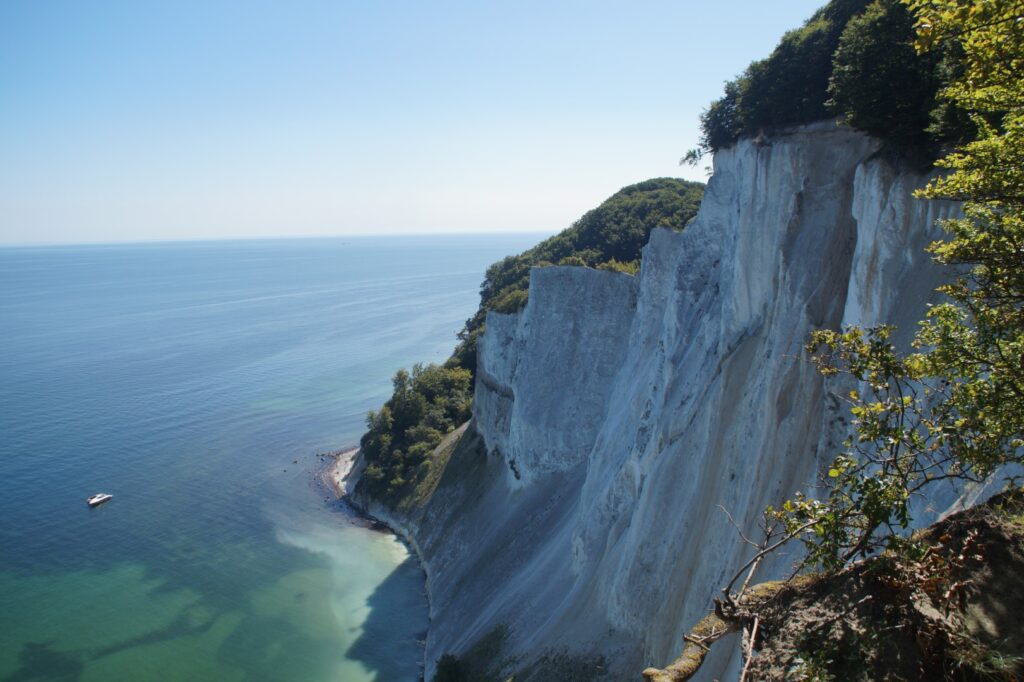
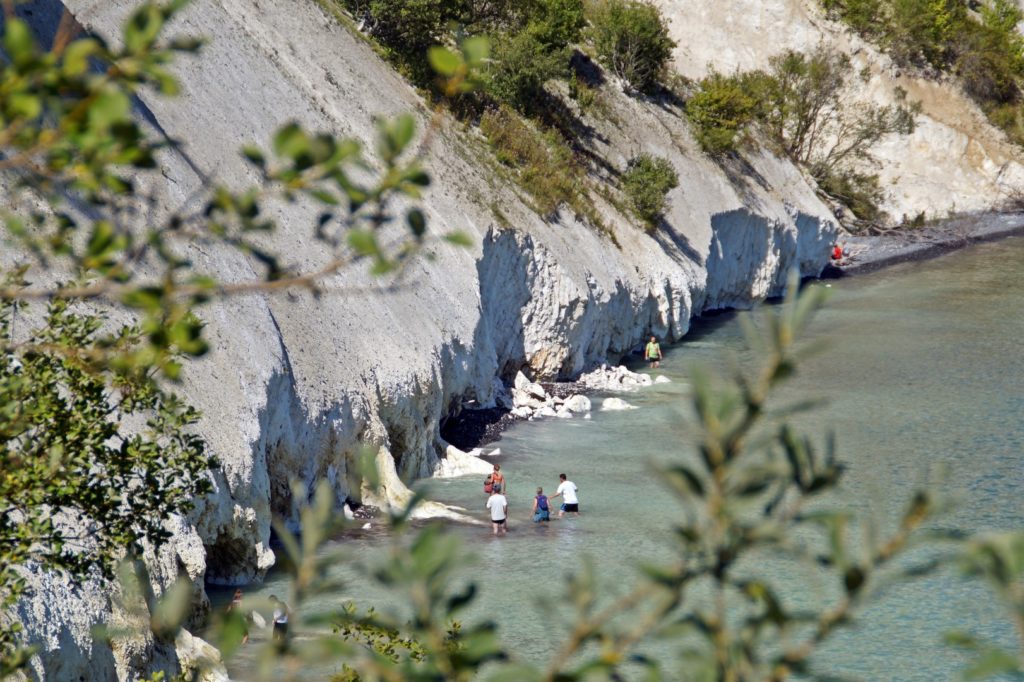
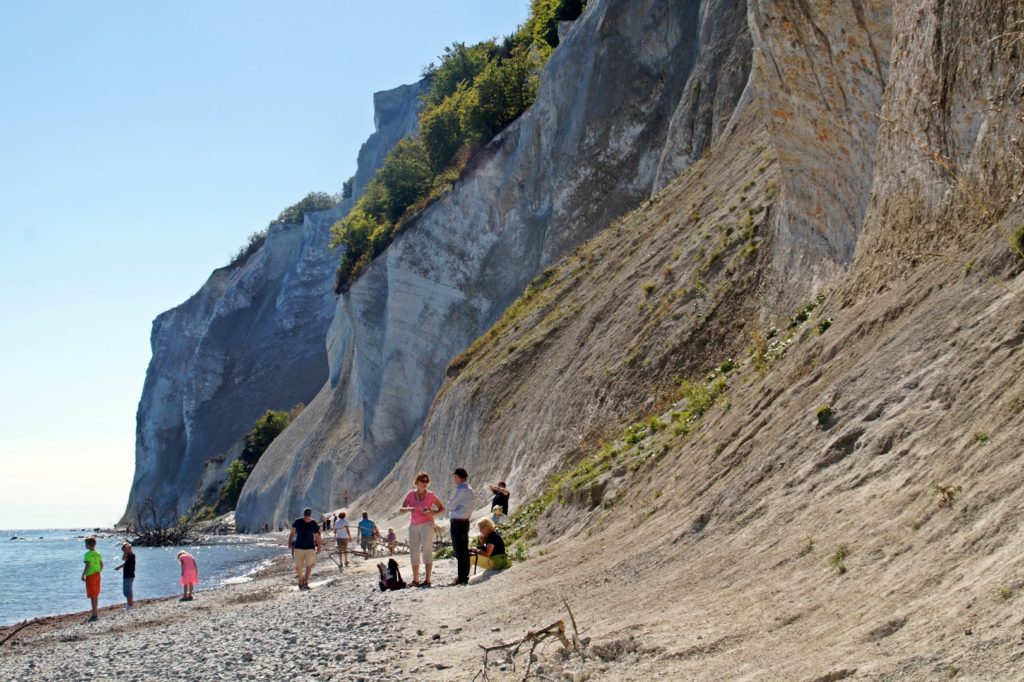
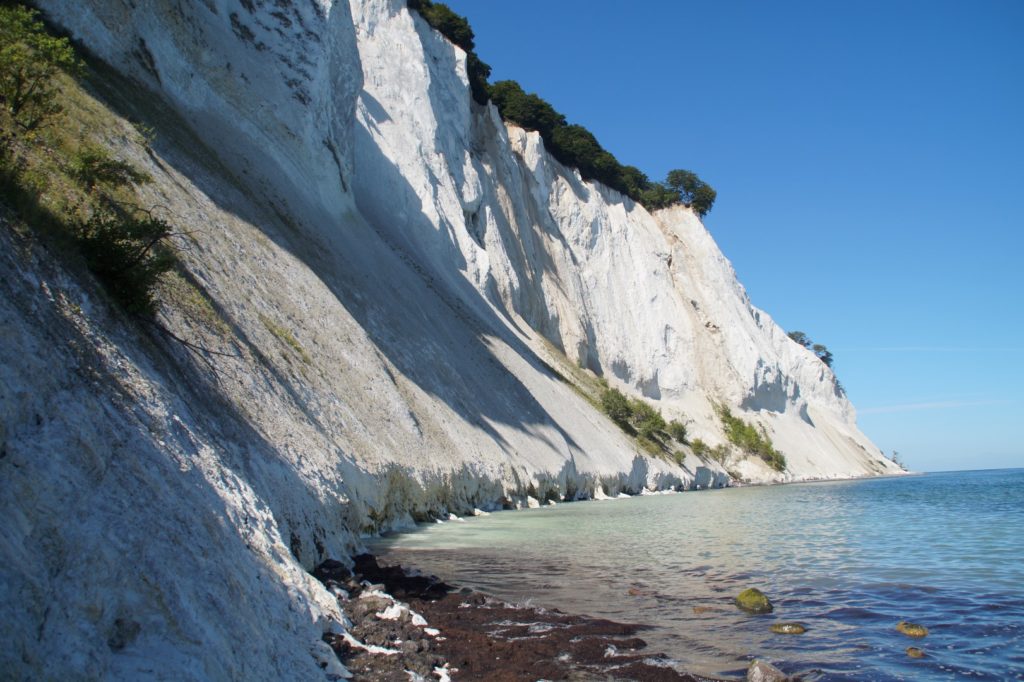
18. The charming village of Dragør
Dragør is one of the most charming villages in Denmark. Located at the end of Amager, this historic village is full of colourful low houses from the 18th and 19th centuries, lining its narrow cobbled streets. Dragør has the largest concentration of protected buildings in Denmark with 81 of them in the old part of town.
Dragør is the easiest of the places I’ve mentioned here to visit from Copenhagen as it’s literally on the same island as a large part of the city. You could easily visit Dragør as a day trip – even by bike! If you do go by bike, don’t forget to stop near the landing strip of the airport as you’ll see planes pass by right above you!
Read more: Biking to Dragør, a charming village on the eastern tip of Amager

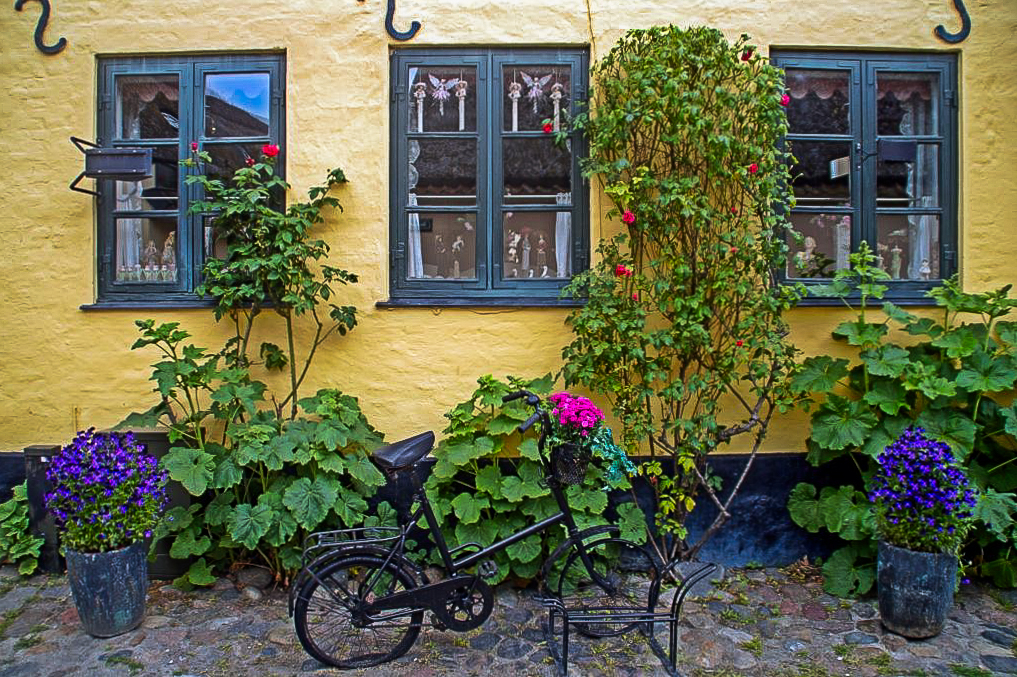
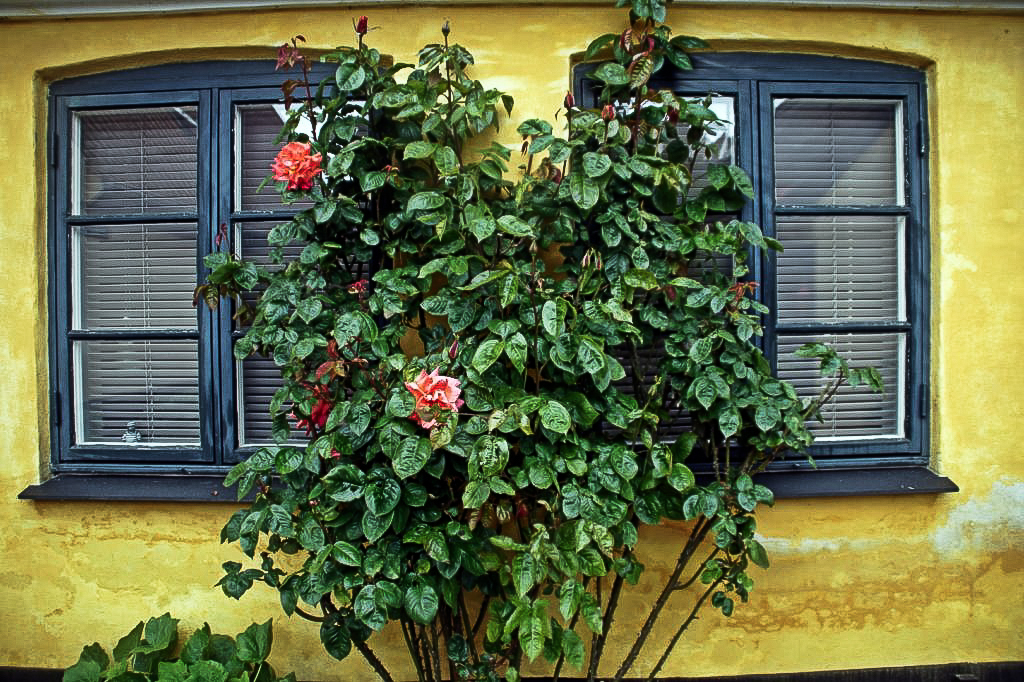
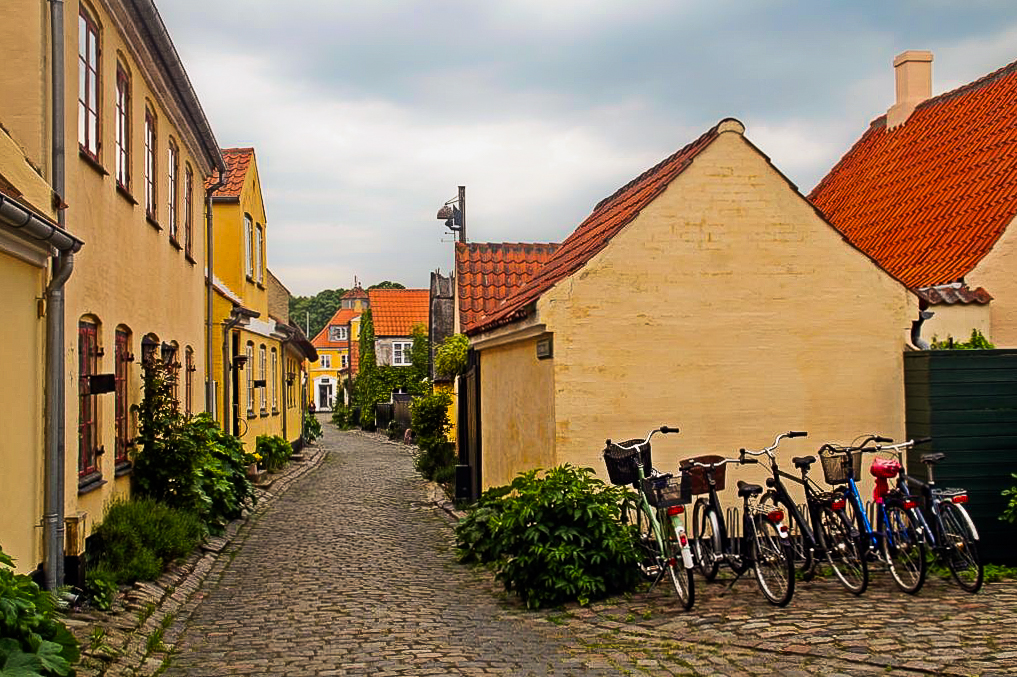
19. Bornholm, the sunshine island
Bornholm is the most unique place in Denmark, both geologically and culturally. It’s actually a lot closer to Sweden than mainland Denmark, and the local dialect is a strange mix of Danish and Swedish (which is hard for both Danes and Swedes to understand!). The bedrock of Bornholm consists primarily of granite and gneiss, which is different from the rest of the country. Therefore, if you’re interested in seeing Danish nature that’s rockier and more rugged than on the mainland, Bornholm’s the place to go! Bornholm is also known as the sunniest place in the country, making it a popular holiday destination for Danes!
There is a lot to see and do on Bornholm, and I recommend spending at least a week exploring the island. Among my favourite places are Hammershus which is the largest ruin in northern Europe, the whitest beach you can imagine at Dueodde, the quaint towns of Gudhjem and Svaneke, the four medieval round churches, the fossilised seabed at Klintebakken, the view from Rytterknægten, the prehistoric rock carvings at Madsebakke and the gorgeous rock bluff of Jons Kapel.
Read more: The sunshine island: 18 places to discover on Bornholm
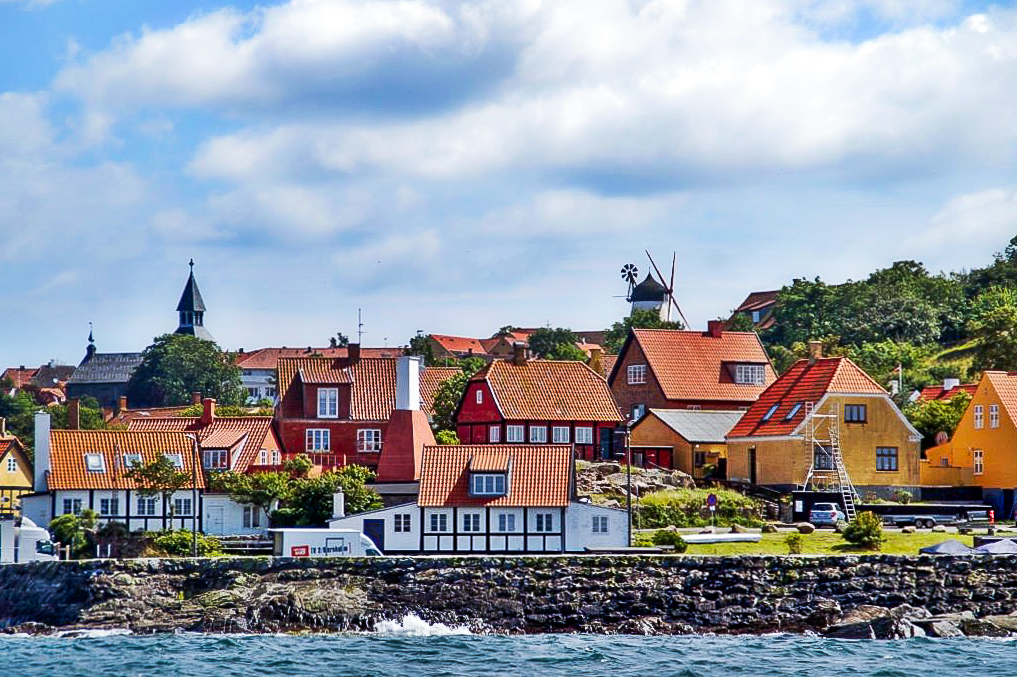
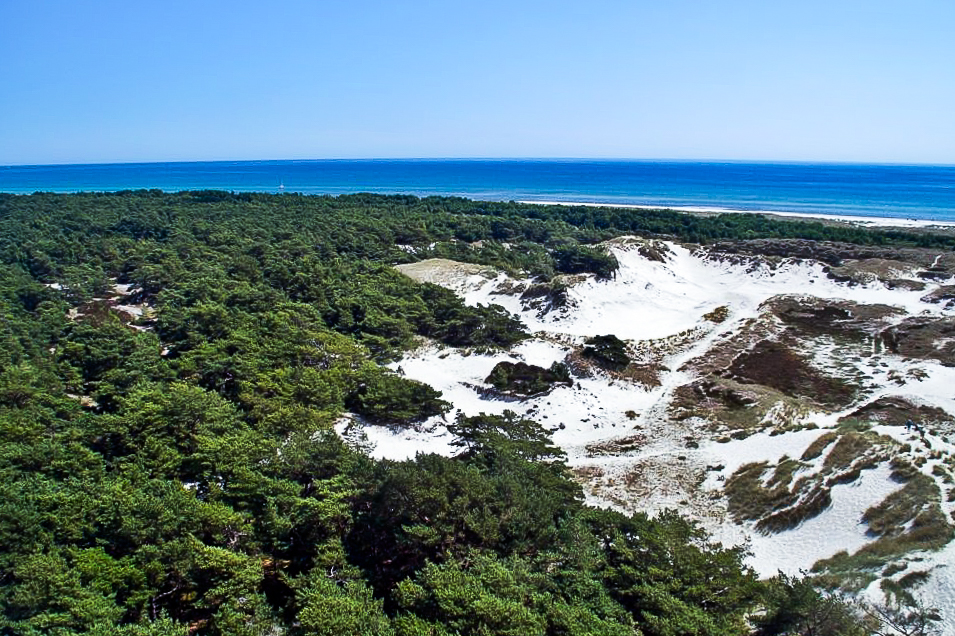

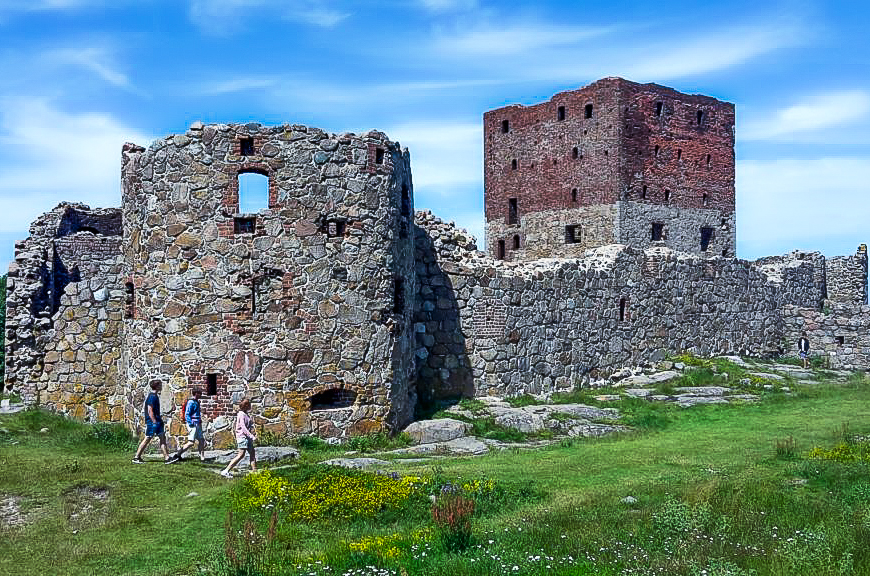
20. Christiansø and Frederiksø, Denmark’s easternmost islands
Ertholmene is an archipelago located in the easternmost corner of Denmark, 19 kilometres off the coast of Bornholm. The archipelago consists of the two inhabited islands, Christiansø and Frederiksø as well as the uninhabited Græsholmen and numerous skerries and rocks.
The first settlement on the islands emerged in the 17th century as a naval base with a fort to be used against Sweden in the many wars between Denmark and Sweden. The islands were bombed in 1808 by the British navy and subsequently lost their military importance. Today, the islands bear witness to these times of hardships as several of the historic buildings survived the bombings and are still standing today. They are now the homes of the 93 people that call the islands home.
Christiansø and Frederiksø make up the perfect day trip from Bornholm as a ferry connects them to the town of Gudhjem. The islands are tiny, so you don’t need many hours to see everything. However, on a sunny day, it’s a perfect place to relax, especially since the islands are a car-free zone!
Read more: To the easternmost islands of Denmark: Christiansø and Frederiksø
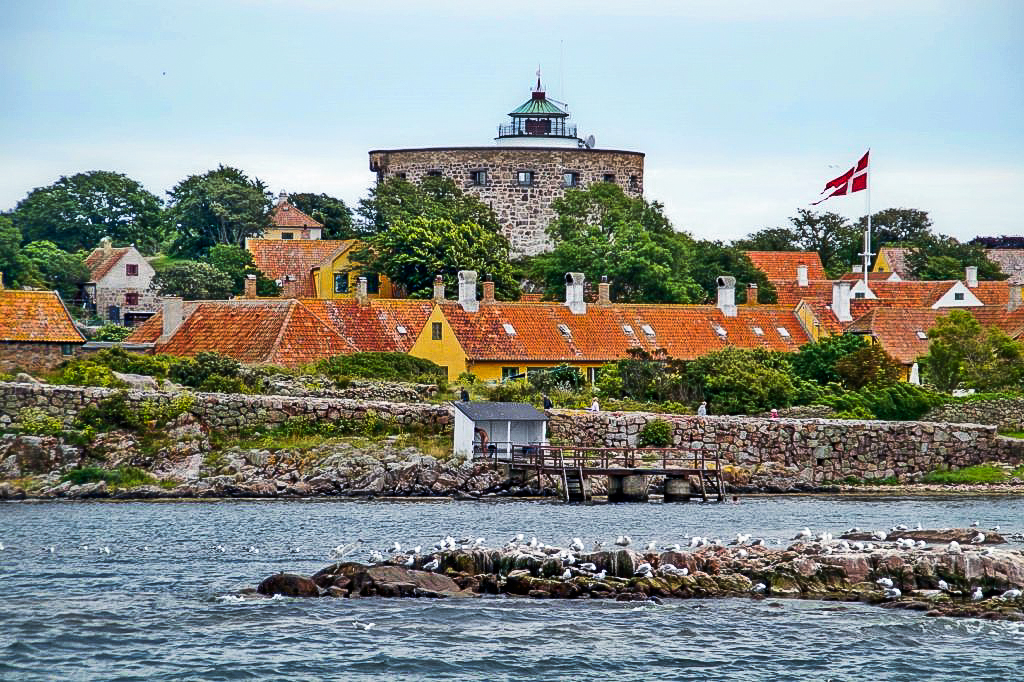
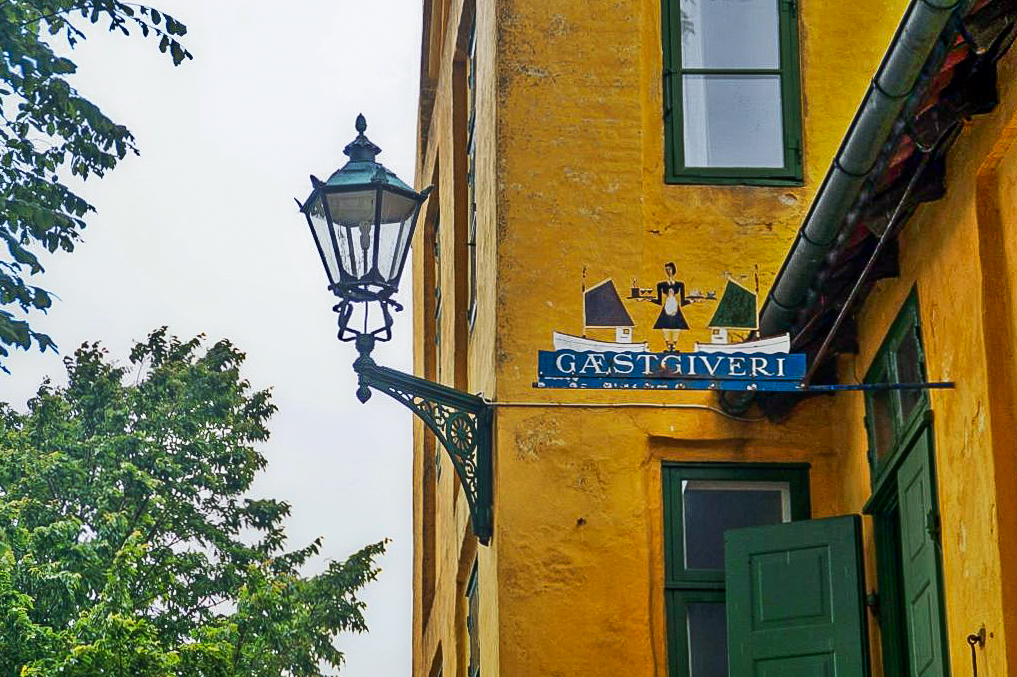
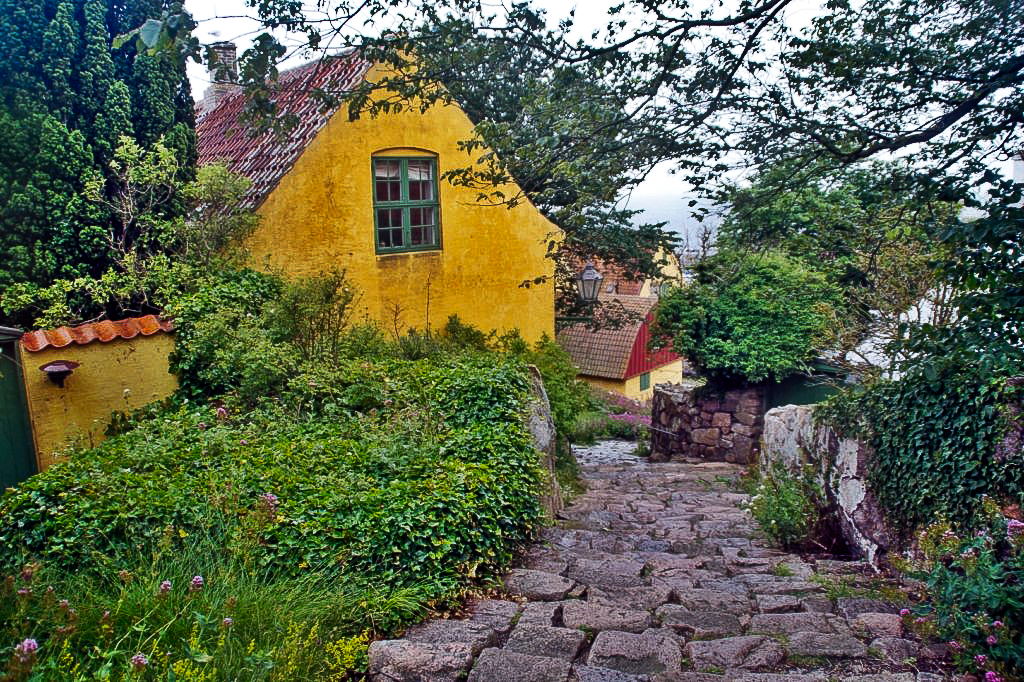
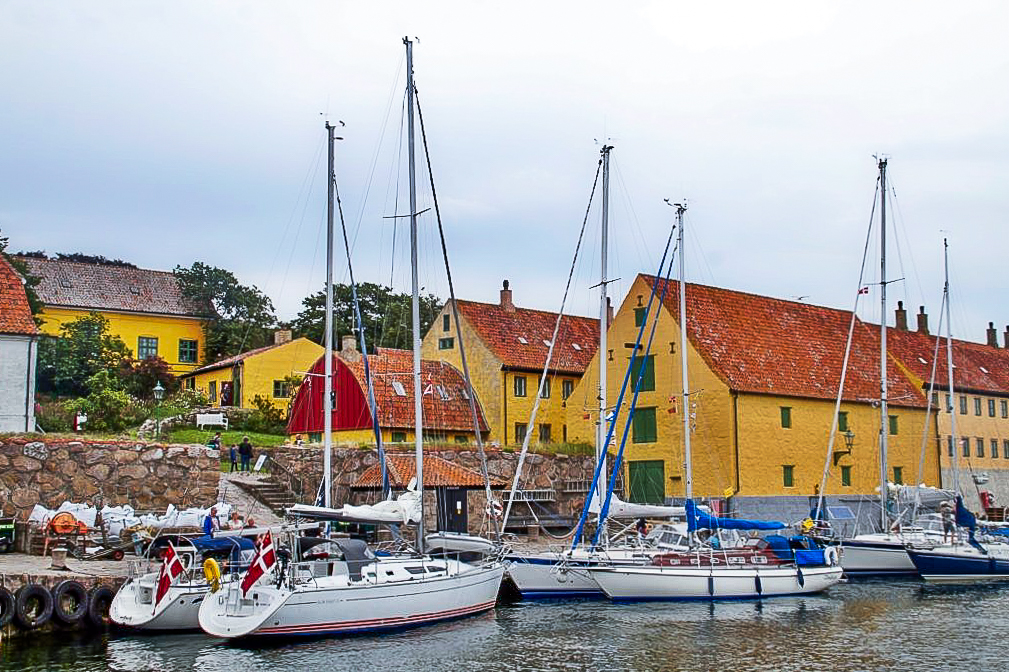
If you’ve come this far, I hope you’ve enjoyed this diverse list of places to see throughout rural Denmark. I hope this list has inspired you to venture beyond Copenhagen and see some of the many beautiful islands, idyllic town and gorgeous nature that the country also has to offer!
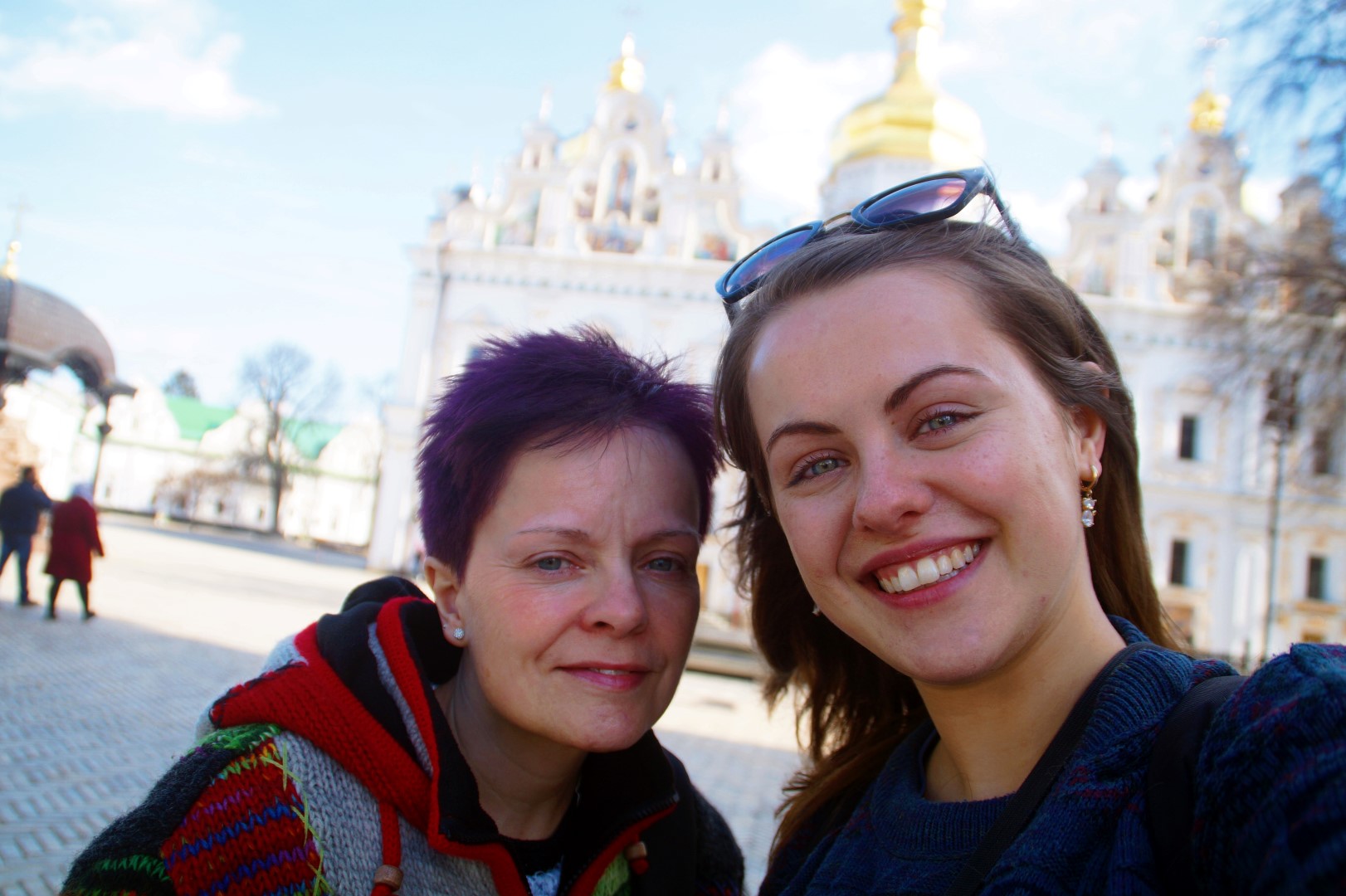
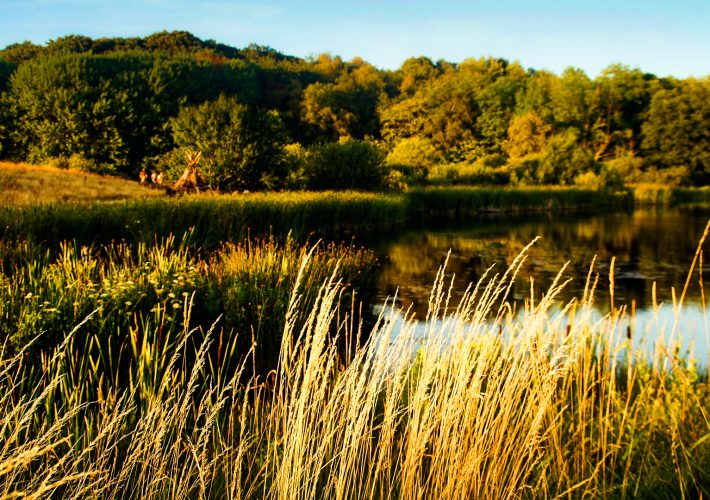
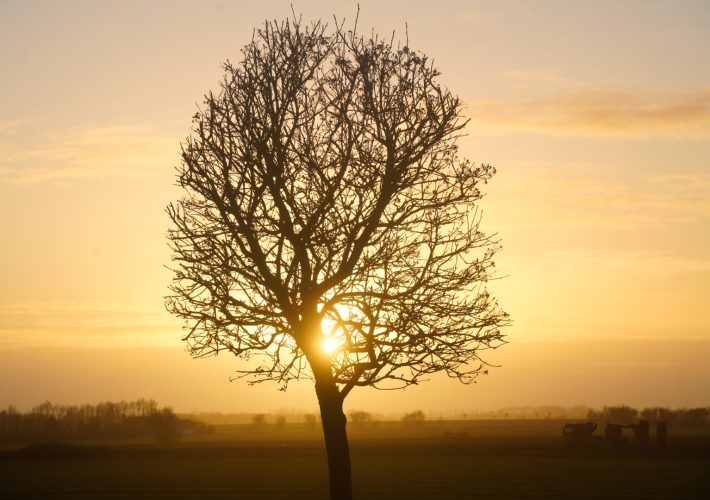

Leave a Comment